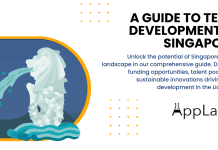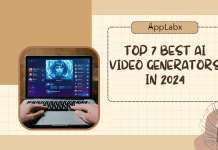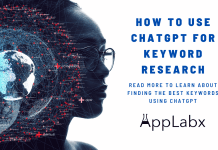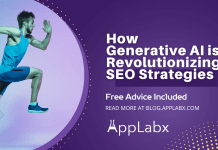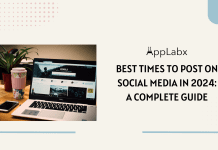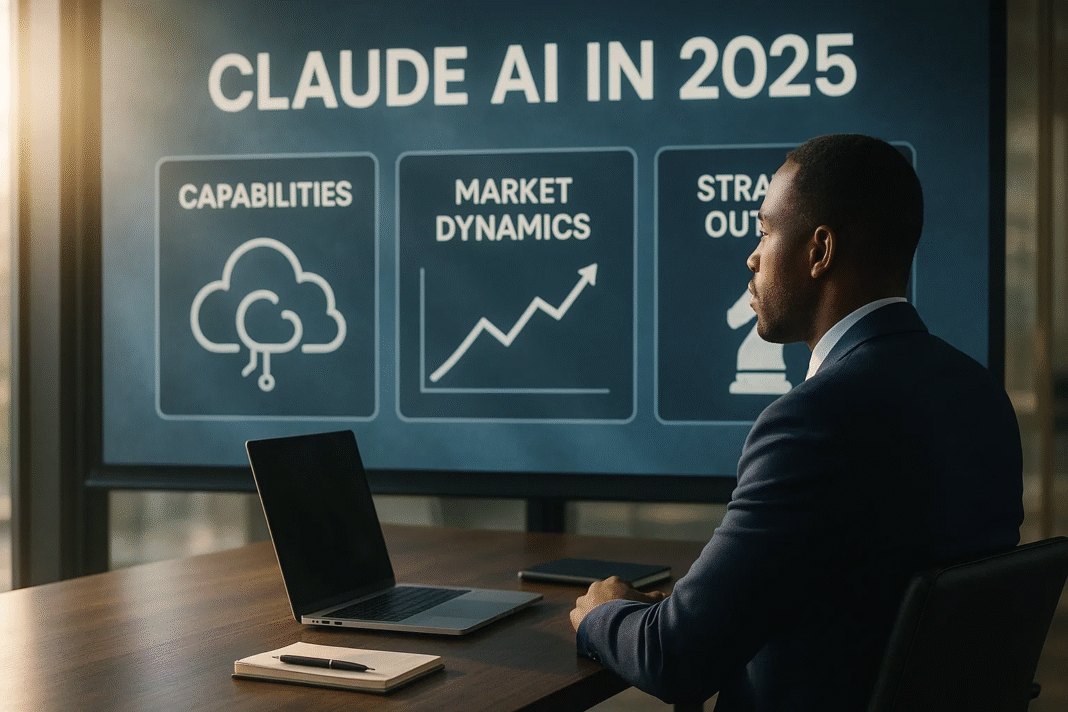Key Takeaways
- Claude AI leads 2025 with advanced long-context processing, superior coding capabilities, and strong enterprise integrations.
- Strategic cloud partnerships with AWS and Google drive Claude’s rapid revenue growth and broad market adoption.
- Anthropic’s commitment to safety and ethical AI through Constitutional AI sets Claude apart as a trusted solution in regulated industries.
In 2025, Claude AI, developed by Anthropic, has emerged as a formidable force in the rapidly evolving landscape of artificial intelligence. Positioned as a direct competitor to OpenAI’s ChatGPT and Google’s Gemini, Claude has demonstrated remarkable progress across reasoning, performance, safety, and enterprise integration. As the global demand for reliable, safe, and scalable AI solutions intensifies, Claude has carved out a distinctive niche with its Constitutional AI framework, multimodal capabilities, and a consistent emphasis on transparency and alignment.
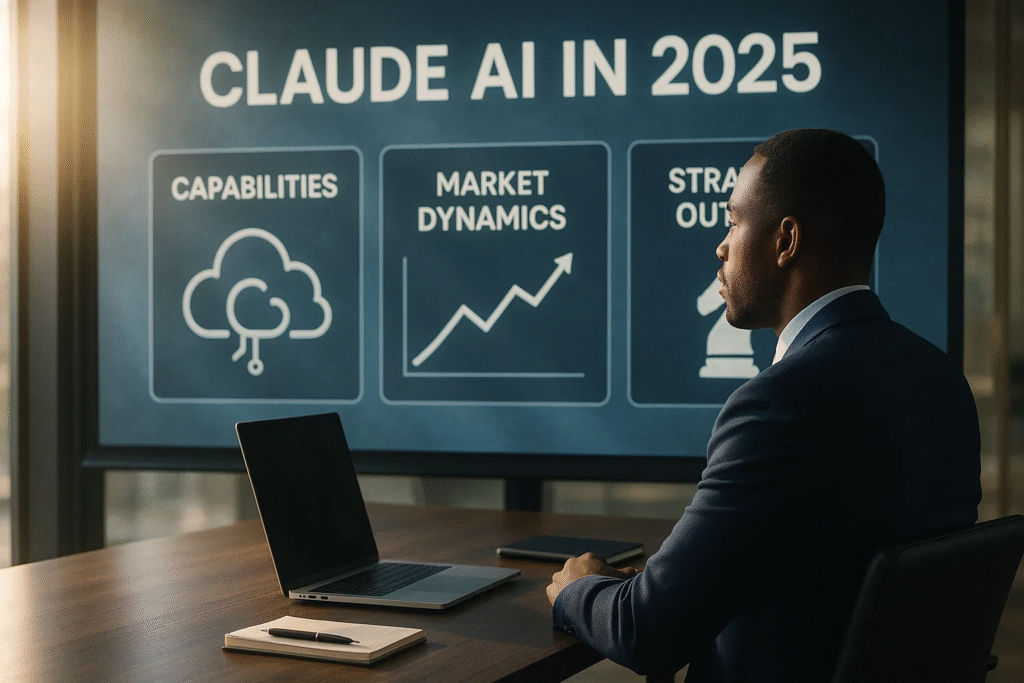
This blog provides a comprehensive and strategic analysis of Claude AI in 2025—exploring its technical capabilities, its growing adoption across industries, the economic and strategic underpinnings of Anthropic’s roadmap, and its competitive stance in the broader LLM (Large Language Model) ecosystem. From Claude 3’s Opus, Sonnet, and Haiku variants to the upcoming Claude-Next project, the evolution of this AI system reflects both a technical triumph and a calculated business expansion that is redefining what AI can deliver in real-world contexts.
The Rise of Claude AI: A Strategic Response to Market Needs
Claude AI’s growth trajectory in 2025 is a direct response to enterprise and public sector demand for AI models that balance innovation with safety and explainability. As organizations increasingly integrate LLMs into mission-critical workflows, Claude has gained favor for its human-like reasoning, higher accuracy in multi-step tasks, and low hallucination rate, especially when compared to competing models. Claude’s performance, particularly in Claude 3.5 Sonnet, has begun to outperform GPT-4 and Gemini in real-world reasoning benchmarks, setting a new industry bar for reliability.
Claude AI and the Constitutional AI Framework
A defining pillar of Claude’s approach is its use of Constitutional AI, a methodology that embeds ethical reasoning into model behavior. Rather than relying purely on post-training alignment, Claude models are trained with a set of predefined principles that shape their outputs. This design is especially crucial for enterprise and government applications that require robust safeguards against misinformation, bias, and misuse.
Claude’s AI Safety Level 3 deployment, implemented in 2025, introduces multilayered safety protocols, including pre-deployment red-teaming, adversarial testing, and real-time monitoring mechanisms. These safeguards have positioned Claude as a trusted platform for AI safety researchers, policymakers, and Fortune 500 companies alike.
Explosive Market Expansion and Strategic Partnerships
Anthropic’s business model has also matured significantly in 2025. With Amazon and Google backing Anthropic with multibillion-dollar investments, Claude AI has secured infrastructure access via Amazon Bedrock and Google Cloud, making it easily deployable across enterprise environments. These partnerships not only offer computational muscle but also signal strong institutional confidence in Claude’s long-term viability.
According to recent industry forecasts, Anthropic’s projected revenue for 2025 has crossed the $3 billion mark, with major contracts signed in sectors such as finance, law, education, and software development. Notable integrations include S&P Global’s financial data services and productivity tools offered via Notion AI and Zoom.
Claude’s Technical Capabilities in 2025
Claude 3.5 Sonnet, Claude Opus 4, and Claude 4 Haiku are now cornerstones of Anthropic’s model portfolio. These models exhibit cutting-edge performance in areas such as:
- Multimodal Processing: Interpreting text, code, tables, charts, and images with high contextual awareness.
- Context Window: Supporting up to 200K tokens, enabling complex document analysis and continuous dialogue.
- Code Generation: Delivering production-level Python, TypeScript, and SQL code outputs with low error rates.
- Data Analysis: Executing data interpretation and visualization tasks, making Claude a valuable asset for analytics teams.
In independent evaluations by sources like WandB.ai and DeepLearning.AI, Claude has outperformed its competitors in strategic reasoning, summarization accuracy, and overall cost-efficiency, cementing its place among the top-tier AI models available in 2025.
The Road Ahead: Claude-Next and the Future of Enterprise AI
Looking forward, Anthropic has revealed plans to launch Claude-Next, a $1 billion R&D initiative aimed at building a model ten times more powerful than existing systems. With this project, Anthropic seeks to extend the frontiers of general intelligence while maintaining its foundational principles of safety, interpretability, and ethical reasoning.
Enterprises are already preparing for a future where Claude-based agents can operate autonomously across long-horizon tasks—spanning weeks or months—without human intervention. This next generation of Claude promises to redefine business workflows, automate decision-making at scale, and serve as a strategic pillar in global digital transformation.
This in-depth blog will unpack each of these dimensions—model architecture, real-world use cases, performance metrics, revenue streams, competitive advantages, and the long-term strategic vision for Claude AI in 2025. Whether you’re an enterprise leader, AI researcher, policymaker, or tech enthusiast, this exploration will provide a valuable lens into how Claude is shaping the future of artificial intelligence.
But, before we venture further, we like to share who we are and what we do.
About AppLabx
From developing a solid marketing plan to creating compelling content, optimizing for search engines, leveraging social media, and utilizing paid advertising, AppLabx offers a comprehensive suite of digital marketing services designed to drive growth and profitability for your business.
At AppLabx, we understand that no two businesses are alike. That’s why we take a personalized approach to every project, working closely with our clients to understand their unique needs and goals, and developing customized strategies to help them achieve success.
If you need a digital consultation, then send in an inquiry here.
The State of Claude AI in 2025: Capabilities, Market Dynamics, and Strategic Outlook
- Executive Overview
- Core Models and Capabilities of Claude AI in 2025
- Advanced Performance Benchmarks of Claude AI in 2025
- Agentic AI and Tool Ecosystem: Claude’s Strategic Leap in 2025
- Claude AI’s Performance Efficiency in 2025: Speed, Cost, and Strategic Implications
- Valuation, Funding Dynamics, and Strategic Investment Landscape
- Revenue Growth
- User Adoption and Market Penetration of Claude AI in 2025
- Strategic Partnerships and Enterprise Integration of Claude AI in 2025
- Enterprise-Grade Integration of Claude AI in 2025: A Sectoral Breakdown
- Transformational Industry Impact of Claude AI in 2025
- Commitment to Safety, Ethics, and Responsible AI in 2025
- Safety, Transparency, and Governance Leadership
- Strategic Outlook and Future Roadmap
- Evolution of AI Agents
- Strategic Vision of Claude AI
- Competitive Positioning of Claude AI in 2025
1. Executive Overview
In the first half of 2025, Claude AI, led by Anthropic, has emerged as a commanding force in the generative AI domain. The release of Claude 4 Opus and Sonnet in May 2025 marked a significant technological leap, offering state-of-the-art performance in areas such as multi-modal reasoning, complex code generation, and autonomous task execution. Anthropic’s robust market performance has been largely fueled by enterprise-grade API monetization, cloud infrastructure alliances, and a transparent commitment to AI safety through Constitutional AI. With eyes on the next frontier, the company’s Claude-Next initiative is set to redefine the trajectory of autonomous AI agents.
Claude AI in 2025: Capabilities and Technical Differentiators
Claude 4 Opus and Sonnet: Performance Highlights
- Release Date: May 2025
- Architectural Type: Multi-modal transformer-based models
- Domains of Excellence:
- Advanced reasoning and chain-of-thought tasks
- High-level code synthesis and debugging
- Accurate summarization across documents and modalities
- Vision + language tasks (image comprehension and generation)
Capability Matrix: Claude vs. Competitors (2025)
| Feature | Claude 4 Opus | GPT-4.5 (OpenAI) | Gemini 2.5 (Google) | Mistral Large |
|---|---|---|---|---|
| Code Generation | Excellent | Very Good | Good | Moderate |
| Multi-modal Reasoning | Excellent | Excellent | Very Good | Basic |
| Alignment with Ethics | Superior | Moderate | Basic | Minimal |
| Speed (Tokens/sec) | High | Moderate | High | Very High |
| Parameter Transparency | Partial | Limited | Very Limited | Open |
Financial and Market Dynamics
Revenue Expansion and Enterprise Penetration
- Revenue Growth (YoY): Projected to exceed $1.2 billion in 2025
- Primary Revenue Channels:
- Enterprise API licensing (notably with Fortune 500 clients)
- Claude-powered integrations across productivity platforms
- Strategic cloud partnerships with AWS and Google Cloud
Strategic Business Drivers
- Cloud-Native AI Offering: Seamless deployment through cloud marketplaces and containerized solutions
- Global Expansion: Growing adoption across Europe, Southeast Asia, and the Middle East
Claude’s Enterprise Use Cases Matrix
| Industry | Claude Capabilities | Business Impact |
|---|---|---|
| Legal Services | Contract review, legal research | Reduced hours, increased precision |
| Finance | Forecasting, fraud detection | Improved model accuracy and efficiency |
| Healthcare | Clinical documentation, diagnostics support | Lowered documentation burden |
| Marketing | Campaign ideation, A/B testing | Enhanced personalization, faster cycles |
Constitutional AI: Safety, Transparency, and Alignment
Key Ethical Frameworks and Safeguards
- Constitutional AI: Claude is trained to follow a set of ethical principles based on human rights, freedom of expression, and non-maleficence.
- Transparency Reports: Anthropic regularly publishes detailed safety evaluations, model limitations, and red teaming assessments.
- Interpretability Research: Claude’s decisions are increasingly explainable, with a focus on debiasing, transparency, and user trust.
Claude’s Safety Advantages
| Safety Domain | Claude 4 (2025) | Competitive Benchmark |
|---|---|---|
| Harmful Output Risk | Very Low | Moderate |
| Jailbreak Resistance | High | Low |
| Ethics Alignment | Highly Aligned | Partially Aligned |
| Transparency Tools | Integrated | Not Standardized |
Strategic Outlook: Claude-Next and Autonomous Agents
Claude-Next Initiative
- Objective: Build AI systems that can autonomously pursue long-term goals with high reliability and minimal human intervention.
- Expected Timeline: Late 2025 to mid-2026 for early prototypes
- Autonomy Focus Areas:
- Multi-step planning and memory
- Self-revision and error correction
- Real-time collaboration with human operators
Future Technology Trajectories
- Agentic AI Systems: Claude is poised to power advanced digital agents that execute end-to-end workflows in enterprise environments
- AI + Human Synergy: Focus on human-in-the-loop systems that maximize productivity without compromising ethical boundaries
- Compute Efficiency: Claude aims to optimize token efficiency, model sparsity, and runtime cost across all deployments
Conclusion
In summary, Claude AI in 2025 has firmly established itself as a next-generation frontier model that rivals – and in many cases surpasses – its contemporaries in capability, safety, and enterprise applicability. Anthropic’s methodical strategy of rapid iteration, ethical integrity, and scalable architecture ensures that Claude will remain central to the ongoing evolution of artificial general intelligence. With Claude-Next on the horizon, the firm is not merely competing in the current AI race—it is redefining the course of intelligent systems.
2. Core Models and Capabilities of Claude AI in 2025
The introduction of Claude Opus 4 and Claude Sonnet 4 on May 22, 2025, has propelled Anthropic’s frontier models to the forefront of generative AI innovation. These models deliver exceptional performance in advanced reasoning, code generation, and multimodal comprehension, marking a substantial leap in the development of AI agents tailored for enterprise-grade applications.
Claude 4 Series: Dual-Mode Reasoning Architecture
Adaptive Reasoning at Scale
- Hybrid Operational Modes:
- Fast Mode: Prioritizes near-instantaneous responses, ideal for routine queries and conversational interfaces.
- Extended Thinking Mode: Designed for deep, deliberate computation, enabling detailed analytical reasoning, data synthesis, and complex task execution.
- Functional Impact:
- Empowers dynamic task optimization depending on query complexity.
- Enables intelligent trade-offs between latency and accuracy.
- Facilitates use-case-specific deployments (e.g., customer service vs. financial analysis).
Application Matrix: Claude’s Dual-Mode Utility
| Use Case | Mode Used | Functional Benefit |
|---|---|---|
| Customer Support Chatbots | Fast Mode | Reduced wait times, enhanced UX |
| Legal Document Review | Extended Thinking | Deep parsing and clause interpretation |
| Market Research & Forecasting | Extended Thinking | Pattern recognition across datasets |
| Daily Scheduling Assistant | Fast Mode | Instant context-aware task updates |
Claude’s Massive Context Window: 200,000 Tokens
Large-Scale Input Comprehension
- Token Capacity: Supports up to 200,000 tokens (~150,000 words or ~500+ pages).
- Applications Enabled:
- Ingesting entire software repositories for debugging or optimization.
- Analyzing comprehensive financial statements or legal filings.
- Synthesizing insights across large volumes of scientific literature.
Benefits of Extended Context Length
- Enables multi-document comparison and inter-textual trend analysis.
- Reduces fragmentation and context loss in high-stakes workflows.
- Ideal for regulatory-heavy domains that require exhaustive document parsing.
Vision Intelligence: Multimodal Capability at Enterprise Scale
Claude’s Vision Features in 2025
- Visual Understanding:
- Accurately processes and interprets photos, charts, graphs, and diagrams.
- Extracts structured data from imperfect or low-resolution images.
- Business-Critical Use Cases:
- Retail: Reading SKUs from product images for inventory processing.
- Logistics: Parsing shipping labels and packaging codes.
- Finance: Interpreting scanned balance sheets or visual financial reports.
Multimodal Integration Matrix
| Input Type | Claude’s Ability | Enterprise Use Case |
|---|---|---|
| Scanned Documents | Text extraction, layout parsing | Compliance, onboarding |
| Graphs & Charts | Pattern detection, summarization | Investor reporting, KPI monitoring |
| Photographs | Object and text recognition | Field inspections, quality control |
| Technical Diagrams | Semantic comprehension | Engineering workflows, systems documentation |
Claude as a High-Fidelity Virtual Analyst
Role Evolution: From LLM to Autonomous AI Assistant
- Claude now acts as an enterprise-grade AI research analyst, capable of:
- Integrating textual, numerical, and visual data.
- Executing analytical tasks such as forecasting, reporting, and data transformation.
- Functioning across workflows in legal, healthcare, finance, logistics, and science.
- Operational Advantages:
- Reduces reliance on siloed systems and manual cross-referencing.
- Accelerates decision-making via real-time insights.
- Enhances data accuracy and output consistency.
Claude in the Enterprise Workflow Lifecycle
A[Data Ingestion: Docs, Code, Images] --> B[Unified Semantic Understanding]
B --> C[Reasoning & Analysis Engine]
C --> D[Output Layer: Reports, Code, Actions]
D --> E[Human Oversight & Decision Loop]
Human-Like Comprehension and Language Fluency
Task Versatility and Language Mastery
- Core Functionalities Include:
- Dialogue, creative writing, storytelling, technical documentation
- Code generation and refactoring across multiple languages
- Scientific analysis and mathematical problem-solving
- Text classification, summarization, rewriting, and data extraction
- Enhanced Steerability:
- Gives users fine-grained control over tone, depth, and structure of outputs.
- Improves predictability, alignment with intent, and content safety.
Summary Snapshot: Claude 4’s Competitive Edge
| Feature | Claude 4 Series (Opus & Sonnet) |
|---|---|
| Dual Reasoning Modes | Yes – Fast & Extended Thinking |
| Context Window Size | 200,000 tokens (~500+ pages) |
| Visual Comprehension | Advanced – Charts, Diagrams, Images |
| Availability to Free Users | Yes (Claude Sonnet 4) |
| Text & Code Proficiency | Near-human in fluency and accuracy |
| Domain-Specific Utility | Legal, Finance, Scientific, Customer Ops |
3. Advanced Performance Benchmarks of Claude AI in 2025
In 2025, Claude AI, particularly the Claude Opus 4 and Claude Sonnet 4 models, stands as a formidable force in the generative AI landscape. Through consistently high rankings in industry-standard benchmarks and domain-specific performance metrics, Claude AI has reinforced its reputation as a specialist in code generation, agentic workflows, and graduate-level reasoning tasks. These achievements not only reflect Anthropic’s commitment to model refinement but also underscore the industry’s growing orientation toward domain specialization over generalist supremacy.
Benchmark Leadership in Code Generation and Agentic Reasoning
Claude Opus 4: Top-Tier Coding Performance
- SWE-bench (Standard Compute): 72.5%
- SWE-bench (High Compute Mode): 79.4%
- Terminal-bench (Standard Compute): 43.2%
- Terminal-bench (High Compute): 50.0%
- Significance:
- Demonstrates elite-level capability in structured code repair and terminal emulation tasks.
- Positions Claude Opus as a preferred LLM for backend development environments and autonomous software agents.
Claude Sonnet 4: High-Efficiency Coding Under Cost Constraints
- SWE-bench: 72.7%
- High Compute SWE-bench: 80.2%
- Outperformed Claude 3.7 Sonnet (62.3%), GPT-4o (54.6%), and Gemini 2.5 Pro (63.2%) on SWE-bench Verified.
- Implications:
- Offers enterprise-grade coding intelligence with lower computational overhead.
- Represents an ideal candidate for cost-effective API deployment.
Excellence in Multilingual, Reasoning, and Mathematical Tasks
Graduate-Level Reasoning and Multilingual QA
- Claude Opus 4:
- GPQA Diamond: 79.6% (83.3% in high-compute environments)
- MMLU: 88.8% (tied with OpenAI’s o3 model)
- AIME (Math Reasoning): 75.5% (90.0% high-compute)
- MMMU (Visual Reasoning): 76.5%
- Claude Sonnet 4:
- MMLU: 86.5%
- AIME: 70.5%
- MMMU: 74.4%
- Performance Insight:
- Claude’s balanced multilingual and mathematical proficiency indicates its utility for international clients, STEM applications, and academic research assistants.
- While it trails OpenAI’s o3 in visual reasoning, Claude’s coding and math-centric performance is unparalleled.
Claude 4 vs Competitors: Benchmark Comparison Table
| Model Name | SWE-bench Verified (%) | Terminal-bench (%) | MMLU (%) | MMMU (%) | GPQA Diamond (%) | AIME (%) |
|---|---|---|---|---|---|---|
| Claude Opus 4 | 72.5 (79.4 High Compute) | 43.2 (50.0 High Compute) | 88.8 | 76.5 | 79.6 (83.3 HC) | 75.5 (90.0 HC) |
| Claude Sonnet 4 | 72.7 (80.2 High Compute) | N/A | 86.5 | 74.4 | N/A | 70.5 |
| OpenAI GPT-4o | 54.6 | N/A | 88.7 | N/A | N/A | N/A |
| OpenAI o3 Pro | N/A | N/A | N/A | N/A | N/A | N/A |
| Google Gemini 2.5 Pro | 63.2 | N/A | 86.2 | N/A | N/A | N/A |
Note: “HC” denotes high-compute mode. “N/A” signifies unavailable or unverified benchmark scores.
Market Insights: From Generalists to Specialists
Evolving Market Dynamics
- Cross-model performance divergence suggests a departure from all-purpose generalist models.
- Claude excels in:
- Complex coding environments
- Long-running autonomous agents
- Structured data extraction from multimodal input
- Competing Models’ Strengths:
- OpenAI’s o3 Pro excels in deep reasoning and broader linguistic intelligence.
- Google’s Gemini 2.5 Pro performs competitively in multilingual and visual reasoning but lags in code synthesis.
Strategic Observations
- Enterprise sentiment strongly favors Claude in developer ecosystems:
- Endorsed by platforms like Cursor, Replit, and GitHub Copilot integrations.
- Use-case-driven LLM adoption is shaping the market:
- Claude is preferred for autonomous agent construction and complex engineering tasks.
- Other models may dominate in natural language creativity or raw inference speed.
Performance Specialization Matrix: Choosing the Right Model by Use Case
| Use Case | Claude 4 (Opus & Sonnet) | OpenAI o3/o3-Pro | Gemini 2.5 Pro |
|---|---|---|---|
| Complex Code Repair & Generation | Best in Class | Moderate | Good |
| Long-Context Summarization | Excellent | Very Good | Moderate |
| Visual Reasoning & Diagram Parsing | Good | Very Good | Best in Class |
| Creative Writing | Moderate | Excellent | Very Good |
| Mathematical Problem Solving | High Accuracy | Good | Limited |
| Multilingual QA | Excellent | Excellent | Excellent |
| Low-Latency Chat UX | Good | Best in Class | Very Good |
Summary: Claude’s Strategic Benchmark Position in 2025
Claude’s high-performance benchmarks in code generation, graduate-level reasoning, and autonomous agent architecture firmly position it as the preferred LLM for developers, research teams, and AI-centric enterprises. While OpenAI and Google’s offerings dominate in generalized linguistic intelligence and speed, Claude’s specialization unlocks significant value in mission-critical, compute-intensive applications. This reflects a broader industry shift where multi-model strategies are becoming the norm—each optimized for a specific functional sweet spot rather than universal performance.
4. Agentic AI and Tool Ecosystem: Claude’s Strategic Leap in 2025
Anthropic’s roadmap in 2025 demonstrates a decisive pivot toward agentic AI systems—models engineered not merely to generate text, but to autonomously interact with digital environments, execute structured workflows, and sustain long-term operations. With the launch of Claude Opus 4 and Claude Sonnet 4, Anthropic is redefining the role of AI from static assistant to autonomous collaborator capable of end-to-end decision execution and intelligent memory retention.
Sustained Task Execution and Long-Running Agentic Performance
Continuous Multi-Step Reasoning at Scale
- Claude Opus 4 is purpose-built for executing multi-hour, multi-step processes, showing exceptional proficiency in tasks requiring prolonged attention spans and multi-phase outputs.
- Supports thousands of sequential operations without degradation in coherence.
- Operates continuously as an autonomous AI agent, enabling complex task chains in engineering, research, or analytics domains.
- Claude Sonnet 4 offers similar capabilities in a more resource-efficient package, supporting mid-range task automation for developers, SMEs, and enterprise teams with constrained compute budgets.
Performance Highlights for Long-Running Agent Tasks
| Task Category | Execution Duration | Agentic Output Type | Claude 4 Advantage |
|---|---|---|---|
| Codebase Debugging & Refactor | 2–6 hours | Fully documented patches and tests | Sustained memory and iterative updates |
| Financial Statement Analysis | 1–4 hours | Structured insights, anomalies, trend summaries | Multi-source ingestion, temporal coherence |
| Academic Literature Review | 3–8 hours | Summarized reports, citations, research briefs | Context-aware memory, cross-document reasoning |
Advanced Tool Use and Autonomy via “Computer Use” Functionality
Simulated Human Interaction with Digital Interfaces
Anthropic has deployed an experimental feature called “computer use”, enabling Claude to:
- Operate GUI environments with mouse and keyboard emulation.
- Navigate web applications, open files, and manipulate form elements.
- Copy/paste, click, type, and interact with user interfaces like a digital assistant or remote worker.
Toolchain Expansion: API-Based Integrations
Claude models can now parallelize tool usage, granting developers powerful orchestration features through API access.
Key Technical Capabilities:
- Code Execution Tool: Run and test code in real-time environments.
- Files API: Upload, retrieve, and parse user documents during sessions.
- Model Context Protocol (MCP): Plug Claude into existing agent frameworks with shared context across models.
- Prompt Caching: Store prompts for up to one hour, preserving continuity across extended workflows.
Claude Code and Developer-Focused Workflows
Full Stack Integration Across Development Pipelines
Claude Code, now generally available, is designed to seamlessly fit into modern software development environments.
- Supported Platforms:
- VS Code & JetBrains IDEs
- GitHub Actions for CI/CD
- Command-Line Interface (CLI) workflows
- Supported Tasks:
- Automated code reviews and refactoring
- Dependency scanning and vulnerability reports
- Documentation generation and formatting
- Regression testing and error resolution
Developer Toolchain Support Matrix
| Tool or Platform | Integration Depth | Functionality Enabled |
|---|---|---|
| Visual Studio Code | Full Plugin Support | Inline code suggestion, commit automation |
| JetBrains (IntelliJ, PyCharm) | Native Extension | Background task execution and inline feedback |
| GitHub Actions | Background Worker Support | Auto-testing, deployment suggestions, PR reviews |
| CLI Tools | Command-based Execution | Custom scripting and terminal-native assistance |
Memory Systems and Agentic Continuity
Enhanced Memory Architecture
Claude Opus 4 introduces persistent memory slots, allowing for:
- Retention of essential facts, variables, and user instructions across long sessions.
- Modular creation of “memory files”—structured data stores accessible throughout the session lifecycle.
This approach enables:
- Stateful operations across agent sessions.
- High-recall conversational and analytic performance.
- Seamless transitions between different stages of a multi-part task.
Claude as a Virtual Collaborator in Enterprise Environments
Redefining AI’s Role in the Workplace
Anthropic’s agentic model roadmap positions Claude not as a passive chatbot, but as a full-spectrum digital collaborator capable of:
- Participating in asynchronous workflows
- Leading automated analysis or documentation tasks
- Taking delegated ownership of sub-processes within complex systems
Strategic Impact on Enterprise Operations
- Workforce Augmentation:
- AI agents can now operate independently or in conjunction with human teams, enabling flatter organizational structures composed of domain-generalist agents and strategic oversight roles.
- Process Automation:
- Removes the bottleneck of repetitive, rule-based tasks.
- Increases productivity through autonomous orchestration of cross-functional tasks.
Impact Projection Matrix
| Department | Claude AI Use Case | Outcome |
|---|---|---|
| Software Engineering | Code generation, testing, CI/CD pipelines | Faster iteration cycles, reduced human errors |
| Finance & Analytics | Automated report creation, anomaly detection | Near real-time decision support |
| Legal & Compliance | Document parsing, clause comparison | Higher accuracy, faster turnaround |
| Operations | Workflow automation, task routing | Reduced manual processing, efficiency gains |
Strategic Outlook: AI-Native Enterprise and the Rise of Agentic Systems
The rapid evolution of Claude into a self-steering, tool-integrated agentic system marks a foundational shift in the role AI plays within organizations. By extending beyond text-based assistance to computer interface interaction, persistent memory, and developer-oriented execution, Claude is laying the groundwork for AI-native teams—digital organizations where agents hold persistent context, collaborate with humans, and assume responsibility for business-critical processes.
This strategic direction signals:
- A post-chatbot era, where general-purpose LLMs evolve into adaptive, embedded systems.
- The dismantling of traditional silos, as Claude-based agents can traverse departments, tools, and datasets with full context awareness.
- A future-proof architecture for digital transformation, driven by Anthropic’s unique emphasis on safe, autonomous intelligence.
5. Claude AI’s Performance Efficiency in 2025: Speed, Cost, and Strategic Implications
Claude AI, developed by Anthropic, has rapidly matured in 2025 into a formidable player in the large language model (LLM) landscape. Its differentiated models—Opus 4, Sonnet 4, and Haiku—demonstrate unique trade-offs in speed, cost, and output quality. These differences have critical implications for market positioning, enterprise adoption, and overall AI infrastructure design.
Speed and Latency Dynamics Across Claude’s Model Family
Claude’s performance efficiency is one of its most closely observed features, particularly in environments requiring high responsiveness or low-cost execution.
Token Generation and Initial Response Speed
- Claude Sonnet 4 delivers the fastest Time to First Token (TTFT) at an average of 1.27 seconds, making it highly suitable for rapid response scenarios.
- Claude Opus 4, although slightly slower at 1.82 seconds, compensates with higher reasoning depth and task persistence.
- Token Generation Rate:
- Sonnet 4: 54.84 tokens per second
- Opus 4: 38.93 tokens per second
Observed Performance Variability
- While benchmarks position Sonnet 4 as a high-speed model, real-world usage reveals inconsistencies:
- Speeds can degrade to below 1 token per second
- Extended delays reported during complex or multi-step reasoning tasks
- These fluctuations are attributed to the model entering “extended reasoning” mode, which prioritizes accuracy over speed
Economic Efficiency: Claude’s Tiered Pricing Model
Anthropic’s pricing structure reflects a well-calibrated strategy to cater to a range of user segments—from budget-sensitive developers to enterprise-scale operations.
Claude Pricing Breakdown (Per Million Tokens):
| Model | Input Price ($) | Output Price ($) |
|---|---|---|
| Claude Opus 4 | 15.00 | 75.00 |
| Claude Sonnet 4 | 3.00 | 15.00 |
| Claude Haiku | 0.25 | 1.25 |
Strategic Use Cases by Model:
- Haiku: Optimized for low-latency, high-volume workflows such as customer service bots and sales enablement
- Sonnet: Acts as a free-tier gateway model, offering competitive performance at minimal cost; ideal for general productivity
- Opus: Best suited for deep analytical workloads, including legal document review, research synthesis, and financial modeling
Cost Optimization Techniques:
- Batch processing and prompt caching reduce runtime costs by up to 90%
- Ideal for businesses automating tasks with large language input redundancy
Benchmark Comparison: Claude vs. Leading Competitors
Anthropic’s models are positioned against industry benchmarks such as OpenAI’s GPT-4o and Google’s Gemini 2.5.
Claude vs. Competitors Performance Matrix (2025)
| Model | Input ($/M) | Output ($/M) | TTFT (s) | Tokens/sec |
|---|---|---|---|---|
| Claude Opus 4 | 15.00 | 75.00 | 1.82 | 38.93 |
| Claude Sonnet 4 | 3.00 | 15.00 | 1.27 | 54.84 |
| Claude Haiku | 0.25 | 1.25 | N/A | N/A |
| OpenAI GPT-4o (API) | 5.00 | 15.00 | N/A | 109.00 (API) / 17.00 (Web) |
| OpenAI O3 Pro | 20.00 | 80.00 | N/A | Slower than O3 |
| Gemini 2.5 Pro | 1.25 | 10.00 | 35.71 | 145.7 / 212.7 (contextual) |
| Gemini 2.5 Flash | N/A | N/A | N/A | 372.00 |
Note: “Tokens/sec” reflects API usage unless otherwise stated. TTFT = Time to First Token.
Strategic Model Segmentation: Claude’s Market Positioning
Anthropic’s deliberate separation of its Claude models into three core variants demonstrates a highly strategic approach to market capture.
Model Segmentation Strategy
| Model | Target Use Case | Key Attributes |
|---|---|---|
| Claude Haiku | High-volume operations, customer support, fast I/O tasks | Cheapest, fastest, basic reasoning |
| Claude Sonnet 4 | Mid-tier reasoning, entry-level user adoption | Fast initial response, competitive free-tier availability |
| Claude Opus 4 | Deep enterprise-level reasoning, strategic AI collaboration | Long context, agentic memory, advanced reasoning |
Strategic Advantages:
- Multi-model lineup allows precision-fit for enterprise vs. general user segments
- Pricing architecture increases Total Addressable Market (TAM)
- Free-tier Sonnet model strengthens user acquisition funnel
Latency vs. Reasoning Trade-Off: The Role of Extended Thinking
As LLMs evolve, traditional notions of “speed” are being redefined. Claude’s implementation of extended thinking mode highlights a broader industry shift:
Key Observations:
- High-speed benchmarks no longer guarantee real-time responsiveness
- Complex reasoning tasks trigger intentional slowdowns to improve quality
- This trade-off reflects a move towards cognitive realism in AI behavior
Enterprise Implications:
- Users must account for “thinking budgets” in latency-sensitive applications
- Performance monitoring tools should distinguish token generation lag from reasoning depth
- Future UX for AI may require progress indicators that inform users when extended thinking is occurring
Conclusion: Claude AI’s Strategic Edge in 2025
In 2025, Claude AI emerges as a strong contender in the AI platform race by offering a nuanced balance between speed, cost, and reasoning capabilities. Anthropic’s three-tier model strategy ensures flexibility, while its intelligent resource management through prompt caching and memory-aware execution distinguishes it in enterprise environments.
By embracing variability in thinking speed as a feature—not a flaw—Claude is pushing the industry towards a deeper understanding of what true AI cognition requires. This trajectory solidifies its role not only as a text generator, but as a strategic cognitive partner across industries.
6. Valuation, Funding Dynamics, and Strategic Investment Landscape
Anthropic’s Explosive Valuation Growth
Anthropic’s trajectory in the AI sector in 2025 has positioned it among the most valuable private technology companies globally. Its exponential increase in valuation not only signals strong investor confidence but also underscores the strategic positioning of Claude AI as a foundational model in enterprise AI adoption.
Key Valuation Milestones
- $18.4 Billion: Valuation reported in May 2024, before the Claude 3 rollout.
- $61.5 Billion: Confirmed valuation as of March 3, 2025, following the Series E funding round.
- $100+ Billion (Projected): Investor enthusiasm signals potential valuation hikes above the $100B threshold.
- Typographical Error Alert: A misreported $615 billion valuation on May 16, 2025, has been debunked by multiple sources.
Strategic Funding Architecture: 2024–2025
Anthropic’s capital structure in 2025 reflects a hybrid model combining equity and debt financing, indicating a maturation of financial strategy and institutional trust.
Equity and Debt Breakdown
- Total Funding Raised: $14.3 billion across 13 funding rounds.
- Debt Capital Raised: $2.5 billion (May 2025), marking a shift toward traditional financial instruments.
- Series E Capital: Raised $11.25 billion between March 2024 and March 2025.
Funding Timeline and Major Contributors
| Round Type | Amount Raised | Date | Key Investors | Valuation |
|---|---|---|---|---|
| Conventional Debt | $2.5B | May 17, 2025 | JPMorgan Chase, Citi Ventures, Goldman Sachs, Barclays, RBC Royal Bank, MUFG, Morgan Stanley | N/A |
| Series E | $3.5B | Mar 3, 2025 | Lightspeed Venture Partners, Fidelity, Salesforce Ventures, D1 Capital Partners, Bessemer, Cisco, General Catalyst, Jane Street, Google | $61.5B |
| Series E | $1B | Jan 22, 2025 | N/A | |
| Series E | $4B | Nov 22, 2024 | Amazon | N/A |
| Series E | $2.75B | Mar 27, 2024 | Amazon | N/A |
| Series D | $5M | Jan 21, 2024 | MIS, Qualcomm, Intuit | N/A |
Strategic Investors and Capital Commitment
Anthropic has attracted capital from a mix of strategic technology partners and traditional financial institutions.
- Amazon
- Total Investment: Over $8 billion
- Key Rounds: $2.75B (Mar 2024), $4B (Nov 2024)
- Strategic Role: Enhancing Claude’s infrastructure and deployment via AWS
- Google
- Total Investment: Up to $2 billion
- Key Contributions: $500M upfront (Oct 2023), $1B (Jan 2025), Participation in Series E (Mar 2025)
- Strategic Role: Integration with Google Cloud and Vertex AI
- Microsoft
- Reported Investment: $2 billion
- Strategic Role: Multi-cloud AI deployment and enterprise scalability
Funding Channel Evolution Matrix
| Funding Source | 2023 | 2024 | 2025 | Notes |
|---|---|---|---|---|
| Venture Capital | Dominant | Co-dominant | Shared with debt instruments | Lightspeed, General Catalyst, Salesforce Ventures, D1 |
| Corporate Strategic Funds | Emerging (Amazon) | Strong (Google, MS) | Highly active (Amazon, Google) | Significant AI infrastructure partnerships |
| Traditional Banking | Absent | Minimal | Substantial (Debt rounds) | Debt financing from JPMorgan, Citi, Goldman Sachs, MUFG |
Strategic Implications for the AI Market
Anthropic’s fundraising activities in 2025 reflect deeper structural shifts in AI investment:
- Lower Perceived Risk Profile
- Institutional lenders’ participation implies Anthropic has achieved operational predictability and creditworthiness.
- Capital Efficiency and R&D Scalability
- Massive funds are earmarked for frontier model training (e.g., Claude-Next), with projected compute budgets exceeding $1 billion per training cycle.
- Institutional Confidence in AI Commercialization
- Debt-based financing demonstrates confidence in Claude’s ability to generate revenue streams through enterprise AI integration, developer tools, and virtual agent licensing.
Outlook and Strategic Trajectory
The scale and diversity of Anthropic’s funding strategy are accelerating the Claude platform’s evolution from a conversational assistant to a full-fledged cognitive automation infrastructure. This financial fortification allows Anthropic to:
- Rapidly scale compute and model training (e.g., Claude-Next and Claude-5 series).
- Expand infrastructure through strategic cloud partnerships.
- Reduce equity dilution and maintain greater strategic autonomy.
- Accelerate deployment of Claude across critical industries: finance, software development, legal, and R&D.
Conclusion
Anthropic’s funding and valuation dynamics in 2025 are emblematic of a maturing AI ecosystem. The infusion of capital from both speculative and structured sources underscores the belief that Claude AI is not just a leading LLM but a cornerstone of future enterprise architecture. Its shift toward hybrid financing indicates a robust foundation for long-term innovation, deployment, and market leadership in the AI domain.
7. Revenue Growth
In 2025, Anthropic’s Claude AI emerged not only as a technological marvel but also as a financial powerhouse. The company’s revenue trajectory underscores the accelerating commercial adoption of generative AI solutions, particularly foundational models delivered through scalable API services. Anthropic’s exponential growth demonstrates the profound monetization potential of LLMs when effectively integrated into cloud-native ecosystems and enterprise-grade infrastructures.
Unprecedented Revenue Acceleration
Anthropic’s financial performance in 2025 exceeded even the most optimistic forecasts, reflecting strong product-market fit and high-volume enterprise usage.
- 2024 Baseline: Closed the year with $850 million in annualized revenue.
- Early 2025 Projections: Internal estimates initially forecasted $2.2 billion in revenue for the year.
- Actual Performance:
- March 2025: Surpassed $2 billion ARR.
- May 2025: Crossed $3 billion ARR.
- July 2025: Reached $4 billion ARR, translating to a monthly run rate of approximately $333 million.
- Growth Velocity: Achieved nearly 4.7x growth in just seven months.
Revenue Growth Timeline (2024-2025)
| Period | Annualized Revenue | Monthly Run Rate | Growth Factor (YoY) |
|---|---|---|---|
| Dec 2024 | $850M | ~$70M | – |
| Mar 2025 | $2B | ~$167M | 2.35x |
| May 2025 | $3B | ~$250M | 3.5x |
| Jul 2025 | $4B | ~$333M | 4.7x |
Claude AI Revenue Composition (2024–2025)
Anthropic’s revenue model demonstrates strategic diversity while being heavily concentrated in its API and enterprise segments.
Primary Revenue Streams
- API Revenue (85% of total in 2024):
- Cloud Distribution via Partners (60–75%)
- AWS Bedrock and Google Vertex AI drive a large share.
- Third-party integrations provide seamless access for enterprise clients.
- Direct API Access (10–25%)
- Enterprises and developers purchase directly from Anthropic’s portal.
- Often tied to developer-centric tasks like program synthesis and agent orchestration.
- Cloud Distribution via Partners (60–75%)
- Subscription-Based Models (10–15%)
- Claude Pro: $20/month individual subscription.
- Claude Team: $30/month per seat, targeting SMBs and tech startups.
- Professional Services (2%)
- Custom fine-tuning, consulting, enterprise onboarding.
Claude AI Revenue Breakdown by Channel – 2025
| Revenue Stream | Share of Total Revenue | Notes |
|---|---|---|
| API via Cloud Partners | 60–75% | AWS Bedrock, Google Vertex AI |
| Direct API Sales | 10–25% | Large enterprises, dev teams |
| Claude Subscriptions | 10–15% | Monthly SaaS plans (Claude Pro, Team) |
| Professional Services | ~2% | Consulting, fine-tuning, managed deployments |
Monetization through Code Generation
Code generation has rapidly evolved into a core monetization vector for Claude AI in 2025.
- High Token Consumption:
- Programming workflows typically consume 5,000–20,000 tokens per session.
- Tasks include multi-file completions, refactoring, and debugging.
- Enterprise Engineering Adoption:
- Startups and Fortune 500s alike deploy Claude for internal developer operations.
- High-frequency usage drives API volume and revenue spikes.
- Use Cases:
- Copilot-style pair programming.
- Backend and frontend generation.
- Data transformation scripts and automation pipelines.
Operational Burn vs Future Profitability
Despite surging revenue, Anthropic maintains high operational expenditures due to the costs of training and serving frontier AI models.
- 2025 Projected Cash Burn: ~$3 billion.
- Break-Even Projection: Expected to become cash flow positive by 2027.
- Long-Term Revenue Forecast:
- Base Case (2027): $12 billion.
- Optimistic Scenario: Up to $34.5 billion in ARR.
Revenue vs Cash Burn Forecast (2024–2027)
| Year | Projected Revenue | Operational Burn | Profitability Status |
|---|---|---|---|
| 2024 | $850M | ~$1.5B | Negative |
| 2025 | $4B | ~$3B | Negative |
| 2026 | ~$8B | ~$4B | Near Break-Even |
| 2027 | $12B–$34.5B | ~$5B | Positive |
Strategic Market Insights and Economic Implications
Anthropic’s revenue architecture in 2025 provides broader signals to the AI economy, marking a paradigm shift in how foundational AI capabilities are commercialized.
Key Observations
- AI Infrastructure vs Consumer Apps:
- Anthropic is capitalizing on “AI as infrastructure,” delivering foundational intelligence to fuel downstream applications rather than competing in end-user software.
- This B2B-centric strategy ensures high retention and predictability.
- Cloud-First Monetization Model:
- Deep integration with AWS and Google has amplified Anthropic’s market penetration.
- These alliances are not merely distributional but symbiotic, embedding Claude into cloud-native environments.
- Token-Centric Revenue Optimization:
- Focus on token-heavy use cases like software development ensures disproportionate revenue from fewer but high-value users.
- Anthropic optimizes for long-context, high-throughput sessions that deliver superior margins.
- Strategic Risk-Taking in R&D:
- The $3B burn is a deliberate investment into Claude-Next and long-context frontier models.
- Such capital intensity is rationalized by expected multi-billion-dollar payoffs from enterprise contracts and long-term infrastructure lock-ins.
Conclusion: Claude AI’s Financial Outlook Anchored by Structural Growth
Anthropic’s aggressive yet structured revenue expansion in 2025 illustrates that foundational AI companies are transitioning from experimental ventures into fully-fledged infrastructure providers. Through cloud-integrated API strategies, high-demand coding use cases, and diversified revenue streams, Claude AI is not only monetizing AI capabilities at scale but also setting the benchmark for sustainable AI commercialization.
Its future lies at the nexus of strategic capital deployment, enterprise utility, and platform extensibility—firmly establishing Claude AI as a core pillar of the evolving generative AI economy.
8. User Adoption and Market Penetration of Claude AI in 2025
As the artificial intelligence landscape matures in 2025, Claude AI—developed by Anthropic—has established a formidable presence among advanced users and enterprises. While it does not command the same ubiquitous consumer brand recognition as ChatGPT, Claude has cultivated a distinct market niche characterized by deep engagement, specialized applications, and enterprise-level integration.
Global Usage Metrics and Traffic Trends
Claude AI’s user growth trajectory in 2025 reveals a substantial and engaged audience base:
- Monthly Active Users (MAU):
- 18.9 million globally, reflecting consistent traction among both developers and enterprise users.
- Platform Traffic (February 2025):
- Claude.ai: 87.6 million visits
- Anthropic.com: 9.49 million visits
- Mobile App Users: 2.9 million monthly active app users
- Geographic Distribution of Traffic:
- India: 17.37%
- United States: 15.76%
- Other Emerging Markets: Notably growing in Southeast Asia and the Middle East
Table 1: Claude AI Usage Snapshot (Feb 2025)
| Metric | Value |
|---|---|
| Total MAU | 18.9 million |
| Monthly Visits to Claude.ai | 87.6 million |
| Monthly Visits to Anthropic | 9.49 million |
| Mobile App Monthly Users | 2.9 million |
| Top Countries by Traffic | India (17.37%), US (15.76%) |
Comparative Market Share and Consumer Positioning
In the broader consumer AI ecosystem, OpenAI’s ChatGPT continues to dominate general usage and spend:
- Global AI Adoption: Over 2 billion people globally have interacted with AI tools as of Q1 2025.
- ChatGPT Market Share:
- 70% of total consumer AI spending
- 86% of spending on general-purpose AI platforms
Matrix 1: Positioning of Claude vs. ChatGPT
| Feature/Dimension | Claude AI | ChatGPT |
|---|---|---|
| Target Segment | Developers, Enterprises | General Consumers, Broad Use |
| Content Strength | Code generation, long-form writing | Conversational tasks, general Q&A |
| Revenue Driver | API usage (enterprise-scale) | Subscriptions, API, plugins |
| Geographic Strength | India, US, technical hubs | Global, strong in US and EU |
| Strategic Focus | Niche specialization | Mass adoption |
Strategic Positioning and User Segmentation
Claude AI’s go-to-market approach reflects a deliberate deviation from mass-market tactics:
- Focused on Enterprise and Developer Markets
- Rather than pursuing the general consumer base aggressively, Claude is optimized for technically demanding tasks such as software development, complex document processing, and ethical AI governance.
- High-Value User Segments
- Users employing Claude for advanced code generation or agentic tasks typically incur greater token consumption per session (5,000–20,000 tokens), which translates into higher per-user revenue through API calls.
- API-Centric Business Model
- Integration with platforms like AWS Bedrock and Google Vertex AI extends its reach across enterprise clouds.
- Claude’s features such as long-context windows, advanced safety guardrails, and support for intricate code workflows differentiate it from general-purpose assistants.
- Enterprise-Centric Revenue Architecture
- Unlike ChatGPT’s consumer-first subscription model, Anthropic leans heavily on B2B monetization, where Claude functions as foundational infrastructure embedded within client solutions.
Claude’s Strategic Outlook in an Evolving AI Market
Claude’s positioning in 2025 reflects an emerging segmentation in the AI marketplace. As the industry evolves, differentiation is occurring along the lines of:
- Use Case Specialization
- AI models are increasingly tailored to either general conversational tasks or specific professional workflows. Claude has leaned into the latter with deep capabilities in coding and structured writing.
- Enterprise vs. Consumer Monetization
- Anthropic’s approach underscores a shift toward monetizing infrastructure rather than user interfaces. The Claude platform serves as an underlying intelligence layer, particularly attractive to developers and IT leaders building internal tools or commercial applications.
- Strategic Niche Over Market Share Race
- Rather than competing head-to-head with ChatGPT across all fronts, Claude is carving out a defensible and profitable niche by offering unique, high-utility functions optimized for fewer but more valuable users.
Claude’s Market Differentiation Summary
Chart: Claude AI’s Competitive Strengths vs. Industry Peers
"Enterprise-Grade Coding & API Use" : 40
"Long-Context Analysis & Document Processing" : 25
"Safety & Ethical Alignment" : 15
"Consumer Chat & Subscriptions" : 10
"Professional Services & Custom Solutions" : 10
In summary, Claude AI in 2025 represents a maturing platform strategically tailored to the high-demand enterprise and developer ecosystems. Its expanding user base, robust infrastructure integration, and specialized feature set allow Anthropic to cultivate high-value relationships without engaging in the undifferentiated race for mass-market dominance. This deliberate positioning sets the foundation for long-term, sustainable growth in an increasingly segmented AI marketplace.
9. Strategic Partnerships and Enterprise Integration of Claude AI in 2025
In the evolving landscape of AI in 2025, Claude AI has emerged not only as a technical marvel but as a cornerstone of strategic alliances between Anthropic and the world’s largest cloud computing entities. These partnerships have reshaped the enterprise AI deployment model, positioning Claude as a high-performance solution embedded within the infrastructure of major cloud ecosystems.
Cloud-Native Architecture and Multi-Platform Availability
Anthropic’s enterprise-oriented distribution model revolves around deep cloud integrations, enabling seamless adoption of Claude across industries:
- Multi-Cloud Deployment Framework:
- Claude models are natively available through:
- Anthropic’s own API (for direct and flexible deployment)
- Amazon Bedrock (AWS’s foundation model marketplace)
- Google Cloud’s Vertex AI (for integrated model training and inference)
- This approach allows Claude to reach diverse enterprise users without forcing migration to a single platform.
- Claude models are natively available through:
- Strategic Benefits of Multi-Cloud Accessibility:
- Facilitates scalable deployment of Claude across varied enterprise stacks.
- Simplifies infrastructure procurement for CTOs and AI teams.
- Reduces vendor lock-in, enhancing Anthropic’s appeal to large corporations with hybrid or multi-cloud environments.
Major Cloud Investments and Financial Backing
Anthropic’s model development and deployment capabilities have been significantly strengthened through massive capital investments from leading cloud providers. These alliances serve not only as funding mechanisms but also as distribution accelerators.
Table 1: Strategic Investments in Anthropic (2023–2025)
| Investor | Investment Value | Key Details |
|---|---|---|
| Amazon | Over $8 billion | – $4B in 2024 (pre-Claude 3 release) – $2.75B in March 2024 (Series E) |
| Up to $2 billion | – $500M upfront (Oct 2023) – Participated in 2025 Series E round |
Strategic Alignment: Infrastructure over Competition
Rather than developing competing LLMs, both Amazon and Google are leveraging Claude to strengthen their AI service portfolios:
- Amazon Web Services (AWS):
- Positions Claude as a core offering within Amazon Bedrock, providing AWS clients with direct access to Anthropic’s models.
- Pursues a “sell the infrastructure” strategy, emphasizing cloud compute, orchestration, and monetization rather than owning the LLM layer.
- Google Cloud:
- Integrates Claude into Vertex AI, expanding its cloud-native ML platform and enhancing its competitive edge in the enterprise AI tooling market.
Matrix 1: Strategic Roles of Cloud Investors
| Aspect | Amazon (AWS) | Google Cloud |
|---|---|---|
| Investment Volume | $8B+ | Up to $2B |
| Integration Platform | Amazon Bedrock | Vertex AI |
| Business Model | Infrastructure monetization | Platform expansion |
| LLM Development Strategy | External partnership (Anthropic) | Mixed internal + external approach |
| Claude AI Distribution Role | Foundational model partner | Model offering within AI stack |
Enterprise Benefits and Cloud Dependency Dynamics
The mutually beneficial relationship between Anthropic and its cloud partners enhances performance, scale, and market reach:
- For Anthropic:
- Gains unprecedented access to compute power, essential for model training and real-time inference.
- Avoids the need to build its own infrastructure, minimizing capital expenditures while scaling globally.
- Leverages cloud go-to-market channels to attract high-value enterprise clients at speed.
- For Cloud Providers:
- Incorporating Claude into their AI stacks allows them to:
- Differentiate against competing clouds by offering exclusive or superior LLM access.
- Attract sophisticated customers in finance, legal, healthcare, and software development verticals.
- Avoid internal LLM development risks and delays by integrating best-in-class third-party models.
- Incorporating Claude into their AI stacks allows them to:
- For Enterprises:
- Simplifies procurement and billing workflows through native cloud integrations.
- Facilitates faster adoption and experimentation using familiar cloud environments.
- Ensures security, compliance, and data residency alignment with enterprise-grade standards.
Chart: Claude AI’s Strategic Value Chain (2025)
A[Anthropic] --> B[Claude AI]
B --> C[Amazon Bedrock]
B --> D[Google Vertex AI]
C --> E[AWS Enterprise Clients]
D --> F[Google Cloud Customers]
B --> G[Direct Anthropic API Users]
This diagram illustrates how Claude serves as a central asset that feeds into multiple distribution channels—both cloud-integrated and direct API-based—amplifying Anthropic’s market penetration across enterprise segments.
Outlook: Cloud Consolidation and Ecosystem Entrenchment
The Claude-cloud partnerships highlight a broader industry trend of AI centralization within hyperscale cloud ecosystems:
- Cloud Platforms as AI Gateways:
- Enterprises are increasingly consuming AI capabilities via their existing cloud infrastructure providers, turning AWS and Google Cloud into full-stack AI environments.
- Anthropic’s Strategic Hedge:
- By maintaining neutrality across cloud platforms, Anthropic avoids overdependence on any single partner while maximizing reach.
- Enterprise Lock-In Risk:
- While procurement and deployment are simplified, enterprises may become increasingly entrenched in a given cloud’s ecosystem, limiting flexibility and increasing switching costs.
Summary: Claude AI’s Strategic Distribution in 2025
Claude AI’s cloud integration model has redefined how LLMs are delivered to enterprise customers at scale. Through robust partnerships with AWS and Google Cloud, Anthropic has established a capital-efficient, infrastructure-leveraged pathway to high-value deployments. This strategic framework empowers Claude to serve as an enterprise AI engine without bearing the full infrastructure burden—while reinforcing the consolidation of advanced AI capabilities within the world’s largest cloud platforms.
10. Enterprise-Grade Integration of Claude AI in 2025: A Sectoral Breakdown
In 2025, Anthropic’s Claude AI has evolved from a general-purpose conversational model into a critical AI infrastructure layer across multiple high-value industries. Its adoption underscores a broader market shift toward verticalized AI solutions, tailored to the nuanced needs of enterprise, finance, education, and software development ecosystems.
Claude AI in Software Engineering: Strategic Integration with GitHub
GitHub x Claude Integration – Redefining Developer Productivity
| Parameter | Details |
|---|---|
| Date of Integration | January 7, 2025 |
| Product Involved | Claude Sonnet 4 |
| Use Case | GitHub Copilot’s coding agent enhancement |
| Key Functions | Smart code completions, contextual debugging, collaboration workflows |
| Impact | Improved compliance, security, and code efficiency for over 100M users |
- Claude Sonnet 4 is now embedded in GitHub Copilot, serving as an intelligent coding assistant.
- The AI provides context-aware suggestions, accelerates bug resolution, and elevates team collaboration.
- Especially valuable for enterprise-grade developers focused on security and regulatory alignment.
Claude AI in Financial Services: Intelligent Workflow Automation
Deployment of Claude for Enterprise Finance Solutions
| Institution | Use Case Highlights | Productivity Gains |
|---|---|---|
| NBIM | Automated Snowflake querying, earnings analysis, company monitoring | +213,000 hours saved (20% uplift) |
| AIG | Enhanced underwriting review process with increased data precision | 5× faster; Accuracy: 75% → 90% |
| Bridgewater (AIA Labs) | Python code generation, financial visualization, iterative data modeling for analysts | Junior-analyst precision at scale |
- On July 15, 2025, Anthropic launched a finance-centric Claude deployment via AWS Marketplace.
- Claude’s capabilities support proprietary trading models, compliance automation, and simulation tools.
- Deployed by Tier-1 institutions, Claude has redefined how quantitative finance and risk modeling are conducted.
Integration with S&P Global: Real-Time Financial Intelligence
S&P Global x Claude API Access
| Feature | Description |
|---|---|
| Launch Date | July 15, 2025 |
| Platform | Kensho API + Anthropic’s Model Context Protocol (MCP) |
| Data Types | Capital IQ financials, earnings transcripts, market reports |
| Interface | Natural language queries via Claude AI |
- Professionals can retrieve and analyze financial data conversationally using Claude.
- Eliminates manual query construction, boosting decision speed and accuracy in capital markets.
Claude in Academia: Institutional AI at Northeastern University
AI-Led Educational Transformation
| Attribute | Details |
|---|---|
| Partnership Date | April 2, 2025 |
| Scope | All 13 campuses under Northeastern’s global enterprise |
| Access Provided | Premier Claude access for students, faculty, and staff |
| Objectives | Curriculum enhancement, AI-first operations, research innovation |
- Claude AI now underpins research, administration, and pedagogy at scale in academia.
- This signals the onset of AI-native higher education environments, fostering next-gen academic innovation.
Strategic Market Positioning Through Developer Ecosystem Expansion
Endorsements & Use Case Highlights
| Company | Use Case |
|---|---|
| Cursor, Replit | Utilized Claude Opus 4 for advanced code generation and correction |
| Sourcegraph | Cited Sonnet 4 as a leap forward in software reasoning |
| Manus | Praised Claude’s ability to follow structured prompts precisely |
| Netflix, Shopify | Demonstrated Claude usage during “Code with Claude 2025” showcase |
| Lawrence Livermore | Adopted Claude Enterprise for scientific and national research |
- Claude is praised not only for raw model intelligence but also for structured instruction-following.
- The AI has become a backbone for large organizations requiring domain-specific reasoning capabilities.
Quantifiable ROI and Claude’s Role as Specialized AI Infrastructure
Claude AI is not merely an enhancement layer—it has become a foundational tool for industry-specific digital transformation.
Measurable Operational Gains
| Metric | NBIM | AIG |
|---|---|---|
| Productivity Improvement | 20% | 5× faster review cycles |
| Time Saved | 213,000 hours | N/A |
| Data Accuracy Improvement | N/A | 75% → 90% |
- These are not lightweight integrations—they fundamentally reconfigure how enterprises operate.
- Claude’s context window, advanced reasoning, and low hallucination rate are directly solving mission-critical problems in risk, compliance, and engineering.
Strategic Implications for Claude’s Long-Term Outlook
- Claude is actively transitioning from a generalized chatbot to a domain-specific enterprise agent.
- Anthropic’s model deployment strategy focuses on embedding AI deeply into secure, compliant, and high-sensitivity environments.
- With high-impact integrations and proven ROI, Claude is positioned as an enterprise AI operating layer—not just a SaaS model.
Conclusion: Claude AI’s Enterprise Flywheel Effect
Anthropic has architected a strategic deployment flywheel—Claude’s advanced capabilities generate operational value, encouraging deeper integrations, which in turn justify broader usage and recurring API consumption. This positions Anthropic as a key driver of AI transformation in regulated and technical sectors, setting the stage for a new wave of AI-native enterprises built around intelligent infrastructure.
If Claude continues this trajectory—by fine-tuning for domain depth rather than just model breadth—it may well become the benchmark for LLM-driven enterprise transformation in the post-generalist AI economy.
11. Transformational Industry Impact of Claude AI in 2025
As of 2025, Claude AI by Anthropic has transcended general-purpose language modeling to become an indispensable component of enterprise and domain-specific digital infrastructure. Its real-world applications extend beyond conversational AI, delivering measurable productivity gains and revolutionizing decision-making workflows in data-intensive and regulated sectors.
Measurable Enterprise Impact
Claude’s adoption across Fortune 500 companies and institutional sectors has translated into quantifiable improvements in both efficiency and quality of output:
| Organization | Use Case | Productivity Gain | Impact Metrics |
|---|---|---|---|
| Norges Bank Investment Management (NBIM) | Financial analytics, document summarization, data querying | 20% | Saved 213,000 hours by querying Snowflake data, analyzing earnings calls, automating news monitoring for 9,000 companies, and streamlining workflows |
| AIG | Insurance underwriting review | 5x faster | Timeline compression of review processes; accuracy improved from 75% to 90% |
| Bridgewater (AIA Labs) | Investment research automation | Significant | Claude generated Python code, created visualizations, and automated financial modeling |
Strategic Use Cases by Domain
Financial Services
- Automated generation of institutional-grade investment memos and pitch decks
- Monte Carlo simulations and risk modeling with interpretable audit trails
- Summarization of earnings reports and market research
- Competitive benchmarking and portfolio diagnostics
Software Development
- Intelligent multi-language code generation and context-aware debugging
- Handling multi-file codebase updates with accuracy
- Auto-documentation, test automation, and refactoring suggestions
- Integrated in IDEs like GitHub Copilot (Claude Sonnet 4)
Legal & Compliance
- Summarizing lengthy contracts and legal documents
- Extracting key clauses and analyzing precedents
- Drafting of boilerplate agreements and templates
- AI-supported compliance monitoring and review
Marketing & Content Creation
- Writing persuasive advertising copy and optimized product descriptions
- Automating long-form blog content, SEO metadata, and email campaigns
- Social media captioning and brand-aligned messaging
- Generating content briefs, outlines, and A/B test ideas
Healthcare & Life Sciences
- Summarizing patient case notes and cross-referencing medical records
- Identifying potential drug interactions and alerting clinicians
- Supporting diagnostic pathways through structured data extraction
- Enhancing R&D collaboration and knowledge retrieval
Higher Education & Academia
- Enhancing research productivity with literature review assistance
- Supporting coding, essay writing, and data analysis for students
- Ethical AI integration frameworks for pedagogy and administration
- In partnership with Northeastern University: Claude licensed to 13 campuses
Customer Support & Service Automation
- Drafting intelligent, empathetic, brand-aligned customer responses
- Summarizing complex support tickets and prioritizing service queues
- Automating FAQs, support articles, and chat workflows
Research & Scientific Discovery
- Accelerating literature review and cross-domain citation mining
- Automating hypothesis validation pipelines and simulation generation
- Structuring large datasets into research-ready outputs
Cross-Industry Use Case Matrix
| Sector | Primary Claude Functions | Key Outputs |
|---|---|---|
| Finance | Risk modeling, compliance automation, memo generation | Institutional-grade analytics and insights |
| Legal | Document analysis, drafting, precedent matching | Contract summaries, consistency checks |
| Software Engineering | Code suggestion, bug fixing, codebase refactoring | Debugged and updated code with high efficiency |
| Marketing | Copywriting, campaign strategy, SEO optimization | SEO content, emails, social posts |
| Education | Essay support, data analytics, teaching assistance | Academic writing, instructional content |
| Healthcare | Medical record analysis, diagnostics, drug interaction checks | Summarized reports, clinical decision support |
| Customer Experience | Ticket summarization, reply drafting, tone personalization | Faster resolution, brand-consistent communication |
| Scientific Research | Data mining, hypothesis automation, visualizations | Enhanced collaboration and peer-reviewed output readiness |
Strategic Implications and Competitive Advantage
- Claude’s domain-tuned intelligence positions it not just as a general AI tool but as mission-critical infrastructure in sectors with complex workflows.
- The breadth of its application—from quantitative finance to scientific research—demonstrates Claude’s maturity and industry adaptability.
- Enterprises leveraging Claude report operational acceleration, cost savings, and improved decision-making accuracy, placing Anthropic in direct strategic competition with OpenAI’s enterprise offerings and Google DeepMind’s domain-specific models.
Summary
The broad deployment of Claude AI in 2025 exemplifies how large language models can deliver tangible, high-ROI outcomes when fine-tuned for industry-specific challenges. By aligning Claude’s architecture with real-world business needs—particularly those involving regulation, compliance, and complex data interpretation—Anthropic has strategically evolved the platform into an AI-powered enterprise solution driving operational transformation across sectors.
12. Commitment to Safety, Ethics, and Responsible AI in 2025
In 2025, Claude AI—developed by Anthropic—has distinguished itself not only for its technical prowess but also for its rigorous ethical framework and proactive governance model. As AI adoption accelerates in high-stakes industries, the demand for secure, reliable, and principled AI systems has surged. Claude’s foundational design, grounded in safety and human values, positions it as a leading choice for enterprises navigating regulatory and reputational complexities.
Foundational Ethical Principles
Anthropic’s design philosophy is rooted in the triad of helpfulness, honesty, and harmlessness—values systematically encoded into Claude’s behavior.
- These principles are more than aspirational; they shape every layer of Claude’s interaction logic and model response curation.
- Claude’s ethical alignment serves as a differentiator in industries where trust, accountability, and transparency are paramount.
The Role of Constitutional AI
At the core of Claude’s alignment strategy is Constitutional AI, a proprietary training methodology designed to instill explicit ethical and normative rules into the model.
- Constitutional AI references well-regarded frameworks, such as the UN Declaration of Human Rights, embedding these values into reinforcement learning.
- It reduces the likelihood of toxic, biased, or harmful outputs—key concerns for enterprise risk and governance teams.
- Enhanced jailbreak resistance positions Claude as a safer option in scenarios where model misuse could lead to brand damage or compliance breaches.
Privacy-by-Design Architecture
Anthropic has also embedded privacy protections into the model architecture to meet enterprise-grade requirements:
- Claude does not use user input data for advertising or model re-training.
- It features advanced data governance capabilities:
- End-to-end encryption
- IP-preserving settings
- Configurable retention policies based on user or organizational controls
- These features ensure Claude remains viable for sectors like finance, law, and healthcare, where confidentiality is critical.
Enterprise Trust and Market Impact
As of mid-2025, Claude’s ethical infrastructure is not just a moral stance—it is a strategic advantage.
- Enterprises increasingly require AI that meets internal compliance audits and external regulatory requirements.
- Claude’s alignment safeguards reduce:
- Risk of misinformation propagation
- Legal exposure from non-compliant outputs
- Ethical liability in sensitive use cases (e.g., insurance underwriting, medical advisory)
- These safeguards directly correlate with increased adoption rates among publicly traded companies and highly regulated sectors.
Strategic Differentiation Matrix
| Evaluation Criteria | Claude AI (Anthropic) | GPT-4/5 (OpenAI) | Gemini 2.5 (Google) |
|---|---|---|---|
| Ethical Value Embedding (e.g., UN Charter) | ✔️ Yes | ✖️ No | ✖️ No |
| Reinforcement via Constitutional AI | ✔️ Yes | ✖️ No | ✖️ No |
| Jailbreak & Prompt Injection Resistance | High | Medium | Low |
| Privacy-First Architecture | ✔️ Yes | ✖️ Partial | ✖️ No |
| Enterprise IP Governance Tools | Robust | Basic | Basic |
| Use in High-Risk/Regulated Sectors | Extensive | Limited | Experimental |
| Advertising Data Usage | None | Yes | Yes |
Market Outlook: Safety as a Strategic Priority
As AI plays an increasingly integral role in enterprise workflows, the bar for ethical performance continues to rise. Claude’s proactive investments in responsible AI give it first-mover status in the emerging landscape of “compliance-first AI.”
- Predicted Trends:
- Rise of government-mandated ethical AI compliance (e.g., EU AI Act, U.S. Executive Orders)
- Procurement preference for AI systems with embedded constitutional logic
- Growing demand for audit trails and explainability in model outputs
Claude’s alignment with ethical governance and its responsible data use principles ensure that in 2025, it is not only capable—but trusted. This commitment positions it as a key driver in the global shift toward AI systems that are not only intelligent, but aligned with humanity’s highest values.
13. Safety, Transparency, and Governance Leadership
In 2025, Claude AI—developed by Anthropic—has emerged not only as a technically proficient large language model but also as a global benchmark for AI governance, risk management, and safety compliance. At a time when enterprise and governmental stakeholders are demanding demonstrable accountability, Claude’s approach to responsible scaling, transparency, and robust safety evaluations positions it as one of the most trusted AI platforms in high-stakes environments.
Rigorous Safety Protocols Through Responsible Scaling Policy (RSP)
Anthropic’s Responsible Scaling Policy (RSP) acts as a risk-governed framework to ensure the safe development and deployment of its frontier models.
- Pre-Deployment Risk Analysis: Every release of a Claude frontier model undergoes exhaustive evaluation for catastrophic misuse scenarios, including:
- CBRN Risks: Chemical, Biological, Radiological, and Nuclear threats
- Cybersecurity Vulnerabilities
- Autonomous Agent Exploitation
- AI Safety Level 3 (ASL-3) Framework:
- Incorporates internal red-teaming
- Invites third-party audits for external verification
- Implements mitigation strategies based on risk profiles
This layered approach is uniquely structured to balance innovation with public safety, and aligns Claude with evolving regulatory guidelines across the U.S., EU, and Asia-Pacific markets.
Claude’s Transparency Hub: An Industry First
On February 27, 2025, Anthropic launched the Transparency Hub, a centralized platform for communicating governance, model behavior, and real-world safety performance.
- Published Metrics Include:
- Account bans and appeals
- Child safety reports to the National Center for Missing and Exploited Children (NCMEC)
- Government takedown request volume
- Model Transparency Disclosures:
- Methodologies for red-teaming and misuse simulation
- Platform abuse mitigation techniques
- Ongoing research in AI robustness, fairness, and societal impact
- Governance Reporting:
- Internal review boards
- Risk scoring systems tied to model updates
- Privacy-preserving data infrastructure
This level of visibility is unprecedented in the LLM space and is considered a regulatory blueprint for what “full-stack AI accountability” should look like in the years ahead.
Quantitative Safety Benchmarks: Claude 4 Opus and Sonnet
Anthropic’s Claude 4 family, especially Opus 4 and Sonnet 4, has demonstrated exceptional safety benchmarks through detailed system evaluations. Below is a summary matrix of safety performance metrics:
Claude 4 Safety Performance Matrix (2025)
| Metric Category | Claude Opus 4 | Claude Sonnet 4 | Interpretation |
|---|---|---|---|
| Harmless Response Rate (Violative Prompts) | 98.43% (± 0.30%) | 98.99% (± 0.23%) | Higher is better |
| Over-Refusal Rate (Benign Prompts) | 0.07% (± 0.07%) | 0.23% (± 0.11%) | Lower is better |
| Prompt Injection Resistance (With Safeguards) | 89% | 86% | Higher is better |
| Agentic Coding Defense (No Safeguards) | 88% | 90% | Higher is better |
| Jailbreak Resistance (StrongREJECT, Extended) | 2.24% | 2.24% | Lower is better |
| Bias (Disambiguated Bias Score) | -0.60% | -1.16% | Closer to zero is better |
| Bias (Ambiguous Bias Score) | 0.21% | 0.61% | Closer to zero is better |
| Bioweapon Acquisition Risk (Uplift Multiplier) | 2.53× | 1.70× | Lower is safer |
| DNA Synthesis Screening Evasion | Incomplete | Incomplete | Safer performance |
Evaluation of CBRN and Cybersecurity Risks
Anthropic’s risk evaluations in 2025 now go far beyond academic benchmarks and extend into real-world adversarial testing:
- CBRN Readiness:
- Opus 4 exhibited a 2.53× uplift in bioweapon-related trials, suggesting high capability but with enforced safety controls to prevent successful completions.
- Both models failed to bypass DNA synthesis screening tasks, indicating resilient biological safety protocols.
- Cybersecurity Testing (CTF Categories):
- Both Claude Opus and Sonnet underwent Capture The Flag trials across:
- Web Exploits
- Cryptographic Attacks
- Reverse Engineering
- Network Intrusions
- Opus 4 showed marginally stronger performance while maintaining non-autonomous containment.
- Both Claude Opus and Sonnet underwent Capture The Flag trials across:
Strategic Implications for Enterprise and Government Clients
Claude’s safety infrastructure is not just a technical asset but a strategic differentiator in public and private procurement decisions.
- Sector Adoption Benefits:
- Finance: Meets anti-fraud and compliance auditing standards
- Healthcare: Withstands data privacy and harm avoidance thresholds
- Defense & Government: Aligns with AI risk frameworks from DARPA, NATO, and the EU AI Act
- Procurement Preferences Emerging in 2025:
- Safety scorecards are now mandatory in many government RFPs
- Independent red-teaming audits and ASL certificates are being required in high-risk verticals
Competitive Positioning Matrix: Safety and Governance (2025)
| Feature / Metric | Claude 4 (Anthropic) | GPT-4/5 (OpenAI) | Gemini 2.5 (Google DeepMind) |
|---|---|---|---|
| Responsible Scaling Policy | ✔️ Yes | ✖️ Partial | ✖️ No |
| Public Transparency Hub | ✔️ Yes | ✖️ No | ✖️ No |
| Jailbreak & Prompt Injection Resilience | High | Medium | Low |
| CBRN Risk Controls & Disclosures | ✔️ Disclosed | ✖️ Unclear | ✖️ Unclear |
| ASL-3 Third-Party Audits | ✔️ Complete | ✖️ Undisclosed | ✖️ Undisclosed |
| Quantitative System Cards | ✔️ Comprehensive | ✔️ Partial | ✖️ None |
| Model Bias Benchmarks (BBQ, RealToxicity) | ✔️ Published | ✔️ Limited | ✖️ Limited |
| Privacy-Preserving Design | ✔️ Strong | ✖️ Partial | ✖️ Partial |
The Road Ahead: Toward Global Standards in AI Accountability
Anthropic’s transparency-first and safety-forward approach sets a precedent in the competitive LLM landscape:
- Rising Industry Pressure:
- Competitors may soon face market or regulatory pressure to match Claude’s level of openness.
- Policy Impact:
- Claude’s safety frameworks are now being studied by EU and OECD regulators as templates for emerging AI compliance regimes.
- User and Regulator Trust:
- The clarity of published safety performance, especially in CBRN and jailbreak evaluations, has made Claude the preferred platform for sensitive deployments.
Claude AI in 2025 does not just exemplify technical capability—it represents a strategic commitment to responsible artificial intelligence. With transparent safety benchmarks, constitutional alignment, and a governance model engineered for global compliance, Claude is setting a new paradigm for what safe and trustworthy AI deployment should look like in a high-stakes, multi-regulatory environment.
14. Strategic Outlook and Future Roadmap
Anthropic’s forward-looking strategy for Claude AI signals a bold and highly capital-intensive trajectory for the future of artificial intelligence. The company is not merely iterating on existing architectures but laying the groundwork for a transformative leap in AI capabilities. With “Claude-Next” positioned as a centerpiece of its roadmap, Anthropic is asserting itself as a long-term leader in the frontier model space.
Next-Generation AI Models: Claude-Next Initiative
Anthropic’s development blueprint for 2025 and beyond revolves around the ambitious Claude-Next project, which aims to redefine the upper bounds of AI performance.
Key Elements of Claude-Next:
- Power Scaling Objective
- Claude-Next is designed to be 10x more powerful than any current large language model (LLM), including Claude 4 Opus and OpenAI’s GPT-4.5.
- This scaling ambition is grounded in empirical research that demonstrates continued improvements with model size and training data—reaffirming the viability of the scaling laws.
- Massive Investment in Infrastructure
- The initiative is expected to demand $1 billion in R&D and infrastructure investment over 18 months.
- This includes the deployment of high-density GPU clusters, most likely powered by NVIDIA H100 or B100 architectures, optimized for parallel processing at unprecedented throughput.
- Focus on Autonomous Capability Evolution
- Claude-Next is expected to overcome the “stumbling agents” problem by enhancing multi-step reasoning, planning, and memory persistence.
- It will be designed for persistent workflows, autonomous agency, and complex decision-making across extended contexts.
Strategic and Economic Implications
Anthropic’s roadmap reveals broader industry and geopolitical implications:
Market Differentiation and Capital Barrier:
- This level of investment effectively raises the barrier to entry, reinforcing AI frontier development as a race dominated by capital-rich firms.
- Claude-Next positions Anthropic among a select few companies globally capable of executing at hyperscale—alongside OpenAI, Google DeepMind, and Meta AI.
Long-Term Enterprise Integration:
- Claude-Next will be optimized not only for conversational AI but also for vertical deployments in healthcare, legal analytics, cybersecurity, and scientific research.
- Enterprises will be able to delegate end-to-end workflows to Claude-based systems, transitioning from human-AI collaboration to semi-autonomous task orchestration.
Policy and Risk Preparedness:
- Governments and institutions must prepare regulatory and ethical frameworks to accommodate AI systems that may initiate, monitor, and adapt long-horizon strategies.
- The roadmap signals the arrival of models that may interact with real-world systems in financial markets, critical infrastructure, and even military simulations.
Claude-Next Development Matrix
| Category | Claude 4 Opus (2025) | Claude-Next (Projected 2026) | Notes |
|---|---|---|---|
| Model Scale | Multi-trillion parameters (est.) | 10x Claude 4 Opus scale | Based on continuation of scaling laws |
| Investment Required | $100M–$200M | ~$1 Billion | 18-month timeline confirmed by Anthropic |
| GPU Infrastructure | Thousands of A100/H100 equivalents | Tens of thousands of B100+ GPUs | High-bandwidth interconnects anticipated |
| Use Case Complexity | Assistive, bounded tasks | Fully autonomous, unbounded tasks | Focus on memory, agency, planning |
| Target Sectors | Enterprise tools, research assistants | Government, science, infrastructure | Deep integration into mission-critical ops |
| Risk Management Layer | ASL-3 Standards | Expected ASL-4 or higher | Includes advanced constitutional safeguards |
Future Capability Trajectory: Forecast Chart
timeline
title Claude AI Evolution (2024–2026)
2024 : Claude 3.5 Launch - Focused on factuality & summarization
2025 : Claude 4 Opus/Sonnet - Context window expansion, ASL-3 compliance
Q3 2025 : Scaling & planning improvements, prelude to Claude-Next
Early 2026 : Claude-Next Initial Deployment - 10x scale, full task autonomy
Late 2026 : Claude-Next integration in national and enterprise systems
Conclusion: Claude’s Roadmap as a Strategic Inflection Point
Anthropic’s investment in Claude-Next marks a critical inflection point in the evolution of artificial intelligence. While Claude 4 Opus and Sonnet have already demonstrated high degrees of safety, accuracy, and ethical integrity, the next iteration seeks to introduce systems that are fundamentally more autonomous, powerful, and capable of operating in dynamic, real-world environments.
This roadmap not only underscores Anthropic’s deep commitment to scalable and responsible AI, but it also signals a paradigm shift in how AI systems will be trained, deployed, and governed. For enterprises, governments, and researchers, Claude-Next represents both an extraordinary opportunity and a call to readiness as machine intelligence moves from tool to agent.
15. Evolution of AI Agents
In 2025, Anthropic is spearheading a paradigm shift in artificial intelligence by advancing AI agents from passive assistants into semi-autonomous digital operators capable of interacting with computing environments, collaborating with human users, and executing complex workflows. These agents—referred to as Computer-Using Agents (CUAs)—represent a significant inflection point in the evolution of AI-human symbiosis, with far-reaching implications for workforce structure, enterprise productivity, and digital infrastructure design.
The Rise of Computer-Using Agents (CUAs)
Anthropic’s Claude platform is actively transforming the landscape of workplace automation through CUAs—AI entities capable of mimicking human computer interaction:
- Direct UI Manipulation:
- CUAs simulate human-like activity, such as moving a mouse, typing commands, clicking interface elements, and navigating software.
- They can open apps, copy/paste data, fill out forms, and interact with browser-based tools autonomously.
- Deployment Status:
- Early iterations of Claude Computer Use are already in limited deployment, undergoing iterative refinement.
- Current use cases include form-filling automation, data migration across dashboards, and basic workflow execution in enterprise systems.
- Human-AI Interface:
- CUAs are being integrated into enterprise messaging platforms such as Slack and Microsoft Teams, allowing employees to delegate instructions directly to AI agents in natural language.
Autonomy Progression: Claude Agent Development Stages
Anthropic has publicly outlined a detailed six-stage roadmap that describes the anticipated evolution of agentic capabilities through 2027.
| Stage | Description | Expected Timeline | Level of Human Oversight |
|---|---|---|---|
| 1 | Static LLMs responding to prompts | Pre-2024 | Full |
| 2 | Chat agents in messaging apps (e.g., Slack, Teams) | 2024–2025 | High |
| 3 | Agents observe user activity and suggest contextual actions | Mid-to-late 2025 | Moderate (on-screen assistance) |
| 4 | Agents perform direct actions on the user’s computer | Early 2026 | Active human supervision |
| 5 | Agents operate PCs semi-independently within login context | Late 2026 | Light-touch oversight |
| 6 | Multi-agent systems collaborate on distributed tasks | 2027+ | Supervision at orchestration level |
Highlights:
- Stage 3–4 will see Claude agents act like digital copilots, shadowing user workflows and stepping in to complete tasks when prompted.
- Stage 5–6 marks the emergence of AI-native autonomy, where Claude can independently navigate an OS environment, solve problems, and engage in long-horizon workflows.
Claude Agents as Workforce Multipliers
By mid-2025, Claude agents have already begun assuming roles that mirror those of junior employees or virtual team members.
Key Capabilities:
- Engineering Support:
- Claude agents are capable of receiving instructions and implementing codebase changes across large repositories—saving engineering teams dozens of hours per sprint.
- Research Automation:
- Agents can conduct internet-based research sessions lasting 30+ minutes to produce high-fidelity, reference-backed responses for complex analytical questions.
- Digital Concierge Roles:
- In HR, finance, and legal departments, Claude can fill out forms, validate documents, and cross-reference databases with minimal guidance.
Claude Artifacts: AI as Creative Toolmakers
In addition to execution, Claude introduces “artifacts”—a feature that democratizes AI-powered creation.
- Self-updating Content Blocks:
- Artifacts can be created, edited, and versioned directly within Claude’s interface, enabling non-technical users to build apps, diagrams, or workflows collaboratively with AI.
- Human-AI Fusion Design:
- Encourages blurring of roles between engineers, designers, and PMs by using Claude as a co-creator instead of a passive assistant.
Strategic Implications for Digital Workplaces
Anthropic’s roadmap points to a future where AI agents become core operational units within organizations. This will significantly alter workplace dynamics, infrastructure design, and employee roles.
Anticipated Outcomes:
- Rise of AI-Native Organizations:
- Companies may adopt flatter organizational structures, where AI agents absorb executional roles while human workers focus on strategy and oversight.
- New Labor Paradigms:
- Traditional job functions in design, development, operations, and customer support will blend, driven by agents capable of interfacing with tools across departments.
- Digital Workspace Redesign:
- Tools will evolve to support agent interoperability, offering shared environments for human-AI collaboration.
Claude Agent Impact Matrix (2025–2027)
| Domain | Role of Claude Agents | Productivity Impact | Human Involvement |
|---|---|---|---|
| Software Engineering | Code refactoring, test automation | 40–60% time savings | Review + merge |
| Knowledge Work | Document summarization, research | 50%+ task offloading | Validation required |
| Customer Operations | Form filling, case triage | 70% automation | Escalation management |
| HR/Admin | Onboarding forms, scheduling | 60% automation | Oversight only |
| Design | Prototype creation, wireframe gen | Collaborative design | Co-creative |
Forecast Chart: Claude Agent Adoption Curve
timeline
title Claude Agent Evolution and Adoption (2024–2027)
2024 : Stage 2 - Slack/Teams deployment, assistive tasks
2025 : Stage 3 - Agents observe user screens for contextual support
2026 : Stage 4–5 - Agents act on behalf of users with login context
2027 : Stage 6 - Multi-agent workflows, autonomous coordination
Ethical Considerations and Responsible Scaling
Anthropic’s Responsible Scaling Policy (RSP) plays a pivotal role in addressing the emergent safety and ethical risks tied to autonomous agent behavior:
- Agentic Alignment Safeguards:
- Claude’s actions are bounded by a Constitutional AI framework, ensuring outputs remain aligned with core human values and corporate policies.
- Auditability and Human-in-the-Loop (HITL):
- All Claude agent actions remain traceable and subject to override, maintaining accountability in environments with regulatory sensitivity.
Conclusion: Claude’s Agentic Future and Strategic Workforce Shift
Anthropic’s accelerated development of Claude AI agents in 2025 marks a critical inflection point in the digitization of labor. From executing low-level tasks to orchestrating multi-agent collaborations, Claude’s transformation into a semi-autonomous digital entity signals a fundamental rethinking of how humans and machines interact within professional environments. As businesses prepare for the advent of AI-native operational models, those who proactively embrace Claude’s agentic capabilities will gain a substantial competitive edge in productivity, scalability, and innovation.
16. Strategic Vision of Claude AI
As of 2025, Anthropic’s strategic vision for Claude AI reflects a dual-pronged commitment: to accelerate the frontier of AI capabilities while embedding robust safety, interpretability, and alignment mechanisms into its core development pipeline. This vision establishes Claude not only as a technological milestone but as a blueprint for responsible, next-generation AI governance and deployment.
Pioneering Dual Focus: Capability Scaling and Safety Engineering
- Balanced Investment Strategy
- Anthropic directs substantial R&D resources toward both capability enhancement and AI safety research.
- This includes building ultra-powerful systems like Claude-Next while investing equally in alignment science, interpretability, and societal impact initiatives.
- Capability-Focused R&D
- Projects like Claude-Next signify Anthropic’s pursuit of AGI-like performance levels.
- These models serve as practical testbeds for complex safety interventions and evaluation of alignment protocols under extreme performance conditions.
- Safety and Alignment Grounded in High-Capacity Systems
- Anthropic asserts that the most meaningful safety research emerges from experiments on highly capable models, as these systems exhibit the most intricate failure modes and alignment risks.
Foundations of Interpretability and Alignment Science
- Internal Model Transparency (“Interpretability”)
- Teams are dedicated to deciphering the internal workings of large language models (LLMs).
- This includes reverse-engineering model neurons, attention patterns, and latent representations to understand how Claude reaches decisions.
- Ethical Alignment Research
- Research focuses on proactive alignment: ensuring Claude remains helpful, honest, and harmless even as it gains more autonomy and decision-making power.
- Mechanisms such as Constitutional AI enforce explicit normative constraints to guide model outputs and mitigate risk.
- Human-Centric Societal Impact Modeling
- Anthropic models social effects of AI on employment, media ecosystems, education, and misinformation.
- It aims to construct frameworks for positive AI-human interaction, especially in contexts of high influence (e.g., policy, education, finance).
Scientific Methodology: Scaling Laws as a Strategic Compass
- Empirical Scaling Framework
- Drawing inspiration from statistical physics, Anthropic relies on empirically derived scaling laws to predict performance as a function of data, compute, and parameter volume.
- Predictive Optimization Matrix VariableRole in ScalingPredictive OutcomeData VolumeInforms model generalization and context richnessHigher linguistic diversity and coherenceCompute BudgetDetermines training horizon and complexityEnables deeper, longer-context reasoningModel ParametersControls abstraction and reasoning depthEnhanced performance on structured tasks
- Exploratory Scaling for Safety
- Anthropic is also pioneering “scaling laws for safety”, a new domain aimed at identifying how safety-related performance metrics scale alongside raw capability.
Strategic Integration: Bridging Innovation and Governance
- AI Strategy Matrix: Capability vs Responsibility DimensionAnthropic StrategyIndustry ImplicationCapabilityClaude-Next, Agentic AI, CUAsPushes frontier of enterprise and AGI-level performanceAlignmentConstitutional AI, interpretability frameworksSets industry benchmarks for model integritySocietal ImpactProactive ethics, long-horizon researchEnhances public trust, supports AI regulationsScientific MethodData-compute-parameter scaling lawsEnables reproducibility and forecastability
- Regulatory and Public Trust Benefits
- By openly investing in these areas, Anthropic positions itself as a trustworthy partner for regulators, governments, and enterprise stakeholders navigating AI policy.
- Reputation as a Thought Leader in Responsible AI
- Claude’s development model challenges the dominant “capabilities-first” paradigm by placing safety co-development at the center.
- This sends a clear message across the industry: safe, aligned, and interpretable AI is not just preferable but strategically essential.
Strategic Outlook: Toward Human-Level and Post-Human AI
- Anthropic’s vision anticipates a future where AI operates at or near human-level cognition in various professional domains.
- By focusing equally on frontier model power and control mechanisms, the company seeks to avert unintended consequences while unlocking transformative AI applications in governance, enterprise automation, and creative collaboration.
17. Competitive Positioning of Claude AI in 2025
Claude AI has solidified its status as one of the most strategically advanced large language models in the 2025 AI ecosystem. With Claude Opus 4 and Sonnet 4 leading the charge, Anthropic has carved out a unique position—marked by technical depth, enterprise trust, and rigorous safety principles.
Key Capabilities and Differentiators
- Advanced Contextual Intelligence
- 200,000-token context window enables the model to analyze massive documents and maintain contextual consistency across extended interactions.
- Excels in use cases such as legal analysis, codebase audits, and long-form strategic documentation.
- Best-in-Class Vision Capabilities
- Performs strongly across diverse visual input formats including diagrams, screenshots, tables, charts, and scanned documents.
- Enables multimodal enterprise use cases, from insurance claims processing to engineering design analysis.
- Enterprise-Grade Safety and Alignment
- Utilizes Constitutional AI to enforce ethical responses, minimize hallucinations, and avoid harmful content generation.
- Boasts among the highest harmlessness scores and resistance to jailbreak attempts across frontier models.
- Hybrid Reasoning Modes
- Offers multiple reasoning pathways including rapid-response (Haiku), analytical depth (Opus), and intermediate balance (Sonnet).
- Enables organizations to choose compute modes based on task complexity and latency tolerance.
- High Transparency and Safety Reporting
- Provides publicly accessible evaluation reports, alignment metrics, and audit trails.
- Sets industry precedent for AI model governance and responsible deployment.
Strength Matrix: Claude AI vs. Competitors (2025)
| Capability Area | Claude AI (Opus 4/Sonnet 4) | GPT-4o | Gemini Flash | Mistral Large |
|---|---|---|---|---|
| Context Window (Tokens) | 200,000 | 128,000 | 1M (streamed) | 32,000 |
| Constitutional Safety System | Yes | No | Partial | No |
| Agent Memory & Task Recall | Strong | Moderate | Developing | Weak |
| Vision & Document OCR | Advanced | Advanced | Moderate | Moderate |
| Enterprise Governance Tools | Yes | Moderate | No | No |
| Jailbreak Resistance | High | Moderate | Unknown | Low |
| Pricing Flexibility (Tiers) | High | High | Moderate | Moderate |
Financial Momentum and Market Traction
- Revenue Growth
- Claude’s revenue saw substantial year-on-year growth, driven primarily by enterprise API contracts and cloud platform integrations.
- Positioned as a trusted model for sectors such as finance, law, and enterprise SaaS.
- Strategic Cloud Partnerships
- Deep integration into Amazon Bedrock, Google Cloud Vertex AI, and partnerships with S&P Global and Slack.
- Simplifies enterprise onboarding and accelerates time-to-value for AI adoption.
Challenges and Areas for Continued Development
Despite strong momentum, Claude faces strategic and technical challenges that must be addressed to maintain frontier relevance:
- Benchmark Gaps in Specific Domains
- Falls slightly behind in some high-level tasks such as graduate-level problem solving (GPQA Diamond) and visual reasoning (MMMU).
- Performance vs. Perception Gap
- Claude Sonnet 4, despite benchmark performance, occasionally lags in perceived latency compared to models like GPT-4o or Gemini Flash.
- Claude-Next Dependency
- Future competitiveness relies heavily on successful execution of the Claude-Next initiative, which aims to develop models 10x more powerful than current systems.
Strategic Implications for Businesses and Developers
Claude AI represents a strategically sound investment for enterprises seeking a blend of reasoning depth, ethical guardrails, and extensibility.
Industry-Specific Value
- Finance and Legal
- Provides auditable reasoning chains and document traceability, crucial for regulatory compliance.
- Software Development
- Claude Code and evolving agentic tools streamline testing, debugging, and documentation workflows.
- Healthcare and Research
- Safe deployment in patient-facing apps due to Constitutional AI and high harmlessness scores.
Developer-Focused Benefits
- Fine-tuned control through temperature settings and system prompts.
- Agent memory functions that enable continuous task-state retention across sessions.
- Tools such as “Claude Code”, “Computer Use,” and memory files that enhance multi-agent workflows.
Strategic Recommendations for Claude AI Adoption
1. Adopt a Multi-Model Architecture
- Combine Claude AI with other models like GPT-4o for multimodal capabilities or Gemini Flash for high-speed inference tasks.
- Ensures workload flexibility, latency optimization, and resiliency in edge-case scenarios.
2. Implement Agentic Workflows
- Invest in Claude’s evolving agent framework to automate multi-step knowledge workflows.
- Use persistent memory files to create agents capable of handling continuous operations across days or weeks.
3. Emphasize Governance and Compliance
- Leverage Claude’s transparency tools for high-stakes deployments in healthcare, legal, and fintech sectors.
- Build trust among stakeholders by showcasing compliance with best-in-class AI ethics standards.
4. Balance Cost and Depth
- Use Claude Haiku for fast, budget-sensitive tasks and Claude Opus for complex analytical workloads.
- Adopt a tiered deployment architecture to maximize efficiency and ROI.
5. Engage the Anthropic Ecosystem
- Participate in initiatives like “Code with Claude” to gain access to cutting-edge roadmap features and community support.
- Explore integrations with major platforms like GitHub, Slack, and AWS for seamless workflow enhancement.
Conclusion: Claude AI’s Role in the AI Ecosystem of 2025
Claude AI stands at the confluence of enterprise trust, technological sophistication, and ethical foresight. As regulatory scrutiny intensifies and enterprise expectations rise, Anthropic’s strategic dual focus on capability and safety has positioned Claude as not just a tool, but an enterprise AI partner. For organizations looking to integrate future-ready AI responsibly, Claude is not only competitive—it is directional.
Conclusion
As the generative AI landscape continues to evolve rapidly, Claude AI has emerged in 2025 as one of the most influential and strategically positioned models in the frontier LLM space, distinguishing itself not only through technical capability but also through a principled, safety-first philosophy. Built by Anthropic with a clear focus on responsible AI development, Claude’s trajectory over the past year has underscored a growing alignment between market demands, regulatory expectations, and ethical AI design.
Claude’s Technological Leadership Is Deeply Rooted in Strategic Design
Claude AI’s foundation rests on a number of unique technological differentiators that position it as a powerful option for enterprises and developers:
- Massive 200K token context windows enable deep comprehension of extensive documents, conversations, and codebases, making Claude a top choice for tasks requiring long-term memory and deep reasoning.
- Hybrid reasoning modes allow Claude to deliver both rapid and deliberative responses based on the complexity of the task, offering flexibility unmatched by most of its peers.
- Best-in-class safety benchmarks, supported by the proprietary Constitutional AI framework, have made Claude a preferred model for industries dealing with sensitive or high-stakes decision-making, including finance, law, and healthcare.
Market Position: Strategic Partnerships Fuel Adoption at Scale
Claude’s success in 2025 has been fueled by strong cloud partnerships with Amazon Bedrock and Google Cloud’s Vertex AI, offering seamless API integration across major enterprise platforms. Its growing presence in developer ecosystems through tools like Claude Code and memory-enabled agents has further strengthened its market position. Anthropic’s enterprise-grade focus and support for regulated industries have driven sustained revenue growth through B2B adoption, solidifying Claude’s commercial viability.
Future Outlook: Scaling, Safety, and Strategic Differentiation
Looking ahead, Claude’s future is shaped by a combination of scaling ambition and governance innovation:
- The Claude-Next initiative, with a $1B investment targeting a 10x performance leap, marks a major step forward in the race toward more general and capable AI agents.
- Ongoing research into scaling laws, interpretability, and long-context learning represents Anthropic’s commitment to advancing not only capability but also alignment, reliability, and human-centered utility.
- By embedding transparency and ethical considerations into its product roadmap, Claude is setting industry precedents for AI safety reporting, jailbreak resistance, and societal impact assessments.
Comparative Advantage in the Competitive Landscape
While models such as GPT-4o and Gemini 1.5 continue to dominate headlines, Claude’s unique strength lies in its balance of safety, capability, and context depth. Although there are areas such as visual reasoning benchmarks and latency optimization where competitors currently lead, Claude’s differentiated value proposition—centered around trust, transparency, and interpretability—offers an irreplaceable advantage, especially for businesses navigating AI risk management frameworks.
| Claude AI vs Competitors (2025 Snapshot) | Claude Opus 4 | GPT-4o | Gemini 1.5 Flash |
|---|---|---|---|
| Context Window | 200,000 tokens | 128,000 tokens | 1 million tokens |
| Safety & Alignment | Constitutional AI | RLHF | RLHF + Eval Harness |
| Vision Capabilities | Strong, improving | Leading | Competitive |
| Agentic Memory Support | Yes | Experimental | Yes |
| Enterprise Readiness | High | Medium | High |
| Transparency & Safety Reporting | Best-in-class | Limited | Moderate |
| Cost Efficiency (per reasoning tier) | Flexible tiers (Haiku, Sonnet, Opus) | Tiered | Less transparent |
Strategic Recommendations for Stakeholders
Claude AI should not merely be viewed as another generative model; it should be evaluated as an enterprise-ready, safe, and interpretable AI partner:
- Enterprises in regulated industries should prioritize Claude for its long-context analysis and alignment-by-design architecture.
- Developers should explore its agentic tools and robust debugging capabilities to build modular, context-rich AI workflows.
- Policy-makers and AI governance professionals should consider Anthropic’s transparency-first approach as a model for responsible innovation frameworks.
- Investors and ecosystem partners should note Claude’s accelerating growth trajectory, underscored by a strong product-market fit and forward-looking roadmap.
Final Thought: Claude’s Place in the AI Epoch
2025 marks a defining chapter in the evolution of artificial intelligence, where capability alone is no longer sufficient. In a time when the world demands not only powerful AI but also responsible AI, Claude distinguishes itself through a harmonious blend of technological ambition and ethical clarity. As businesses, governments, and developers evaluate their AI adoption strategies, Claude AI stands out as a model that is not only smart but also safe, not only fast but also fair, and not only scalable but also aligned with long-term human values.
In this emerging AI economy, Claude is not just a tool—it is a strategic enabler of next-generation digital transformation.
If you are looking for a top-class digital marketer, then book a free consultation slot here.
If you find this article useful, why not share it with your friends and business partners, and also leave a nice comment below?
We, at the AppLabx Research Team, strive to bring the latest and most meaningful data, guides, and statistics to your doorstep.
To get access to top-quality guides, click over to the AppLabx Blog.
People also ask
What is Claude AI and who developed it?
Claude AI is a cutting-edge large language model developed by Anthropic, focusing on safety, alignment, and enterprise-grade applications in 2025.
What are the main capabilities of Claude AI in 2025?
Claude AI excels in advanced coding, long-context understanding with a 200,000-token window, multi-modal vision, and ethical, safe AI responses.
How does Claude AI differ from other large language models?
Claude prioritizes safety through Constitutional AI, offers extended context processing, and targets enterprise use cases over general consumer markets.
What industries widely use Claude AI in 2025?
Key sectors include financial services, software development, legal, healthcare, marketing, education, and research.
How does Claude AI handle coding and developer tasks?
Claude AI supports multi-file code generation, debugging, automation of development workflows, and advanced agentic coding capabilities.
What role does AI safety play in Claude’s design?
Safety is central, with features like Constitutional AI, transparency reporting, and high harmless response rates, reducing misuse and bias risks.
What is Constitutional AI in Claude?
Constitutional AI is a training method that aligns Claude’s outputs with human values and ethical guidelines derived from frameworks like the UN Human Rights Declaration.
How does Claude AI support enterprise clients?
Claude offers API-first solutions, integrates with AWS and Google Cloud, and provides data governance features suitable for sensitive and regulated industries.
What is Claude AI’s market share compared to competitors like ChatGPT?
Claude holds a smaller consumer market share but is stronger in enterprise applications, especially in code-heavy and safety-critical tasks.
How has Claude AI’s revenue grown in 2025?
Revenue has surged, driven primarily by API sales and strategic cloud partnerships, with enterprise clients being the main revenue source.
What are Claude AI’s strategic cloud partnerships?
Anthropic partners deeply with Amazon Web Services and Google Cloud, integrating Claude models into their AI infrastructure offerings.
How does Claude AI address privacy concerns?
Claude does not use user data for ad targeting and offers enterprise-grade privacy and data governance controls.
What advanced features does Claude AI offer for vision tasks?
Claude provides sophisticated image analysis and multi-modal capabilities, enhancing tasks that combine text and visuals.
How does Claude AI contribute to responsible AI development?
Anthropic emphasizes transparency, publishes safety metrics, and follows a Responsible Scaling Policy to mitigate catastrophic risks.
What is the significance of Claude AI’s long context window?
A 200,000-token context enables Claude to process vast documents and complex interactions, ideal for professional and enterprise workflows.
What are some key enterprise deployments of Claude AI?
Notable deployments include Microsoft GitHub integration, financial analysis solutions for NBIM and AIG, and academic partnerships with Northeastern University.
How does Claude AI improve productivity in financial services?
By automating data querying, earnings call analysis, risk modeling, and compliance workflows, Claude boosts efficiency and accuracy.
What is the role of AI agents in Claude’s roadmap?
Anthropic is developing autonomous AI agents that operate user interfaces, manage multi-step tasks, and interact collaboratively in complex workflows.
How does Claude AI support legal professionals?
It automates contract review, summarizes lengthy documents, identifies precedents, and drafts templates to streamline legal workflows.
What are the challenges Claude AI aims to solve in healthcare?
Claude assists in summarizing patient records, identifying drug interactions, and supporting diagnostics while ensuring data privacy.
How does Anthropic ensure Claude AI’s transparency?
Through its Transparency Hub, Anthropic publishes detailed safety, abuse, and governance metrics accessible to the public and stakeholders.
What safety performance metrics demonstrate Claude AI’s reliability?
Metrics include over 98% harmless response rates, strong jailbreak resistance, low bias, and robust defenses against prompt injection.
What is Claude AI’s roadmap for next-generation models?
Plans include “Claude-Next,” aiming for a tenfold increase in power over current models with a $1 billion investment over 18 months.
How does Claude AI’s hybrid reasoning improve performance?
It balances rapid “Haiku” mode for speed and “Opus” mode for deep, complex reasoning, optimizing cost and efficiency.
What makes Claude AI suitable for regulated industries?
Its ethical alignment, data governance, safety-first design, and enterprise integrations make it ideal for finance, legal, and healthcare sectors.
How can businesses best leverage Claude AI’s capabilities?
By adopting multi-model strategies, investing in agentic workflows, prioritizing safety, and optimizing cost-performance trade-offs.
What distinguishes Claude AI’s approach to AI ethics?
Anthropic’s proactive alignment research and Constitutional AI framework set a higher standard for responsible AI use and governance.
How is Claude AI positioned in the broader AI market?
It serves a specialized niche focused on enterprise-grade, safety-conscious, long-context applications rather than broad consumer adoption.
What future developments are expected for Claude AI’s AI agents?
Advancements toward fully autonomous multi-agent collaboration by 2027, transforming workplace automation and digital workflows.
Why is Claude AI considered a strategic partner for enterprises?
Its robust safety protocols, scalable API access, and cloud partnerships provide reliable, secure AI infrastructure for mission-critical applications.
How does Claude AI foster innovation in software development?
By enabling automated coding assistance, enhanced debugging, and integrated AI agents, Claude streamlines development and accelerates delivery.
Sources
YouTube
Anthropic
Wikipedia
Amazon Web Services (AWS)
Poe
PW Skills
Zapier
Training Camp
S&P Global
Assured AM
Moomoo
TechSur Solutions
DigitalRosh
Perplexity
Analyzify
Menlo Ventures
Medium
Wandb
Tracxn
Sentisight
Sacra
DataCamp
Citrix
AI 2027
Northeastern University
Tom’s Hardware
DeepLearning.AI
Artificial Analysis
Creole Studios
Marketing AI Institute
OpenAI Community
Vellum AI
TS2 Space
Keywords AI
The Neuron





